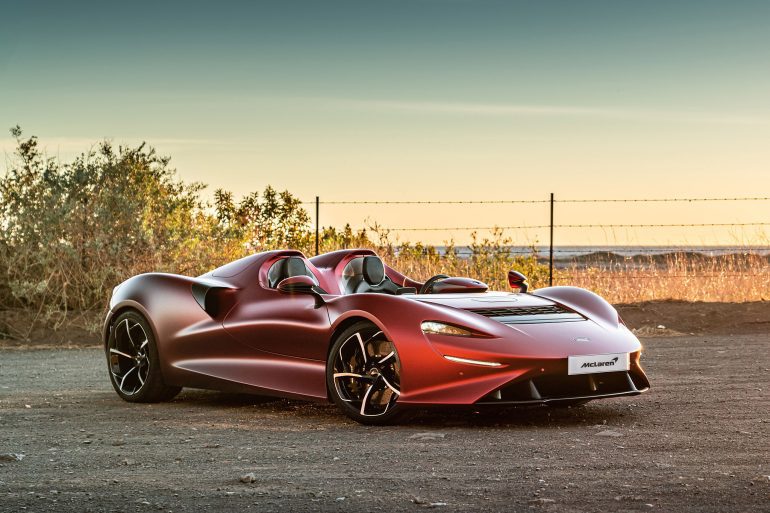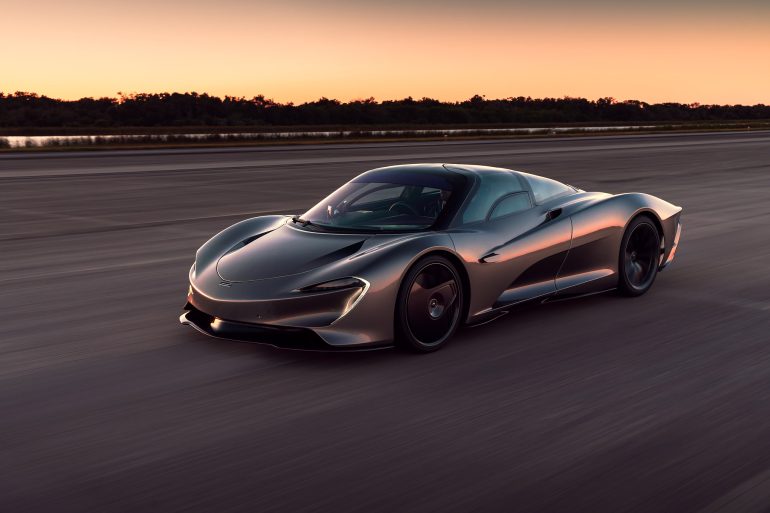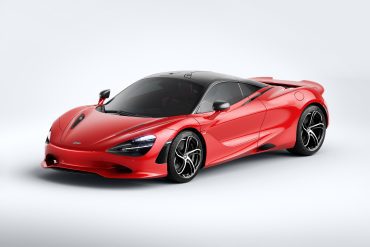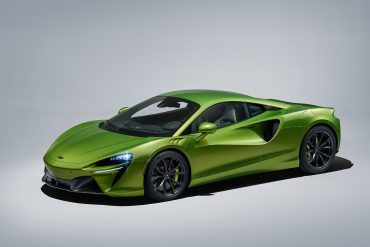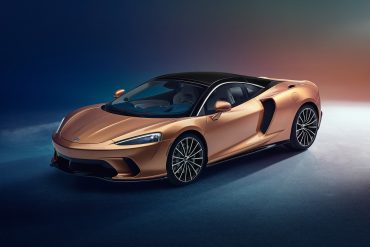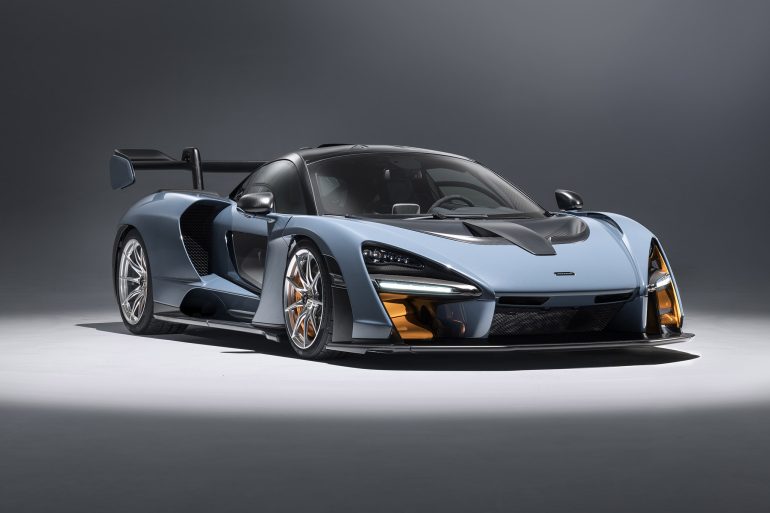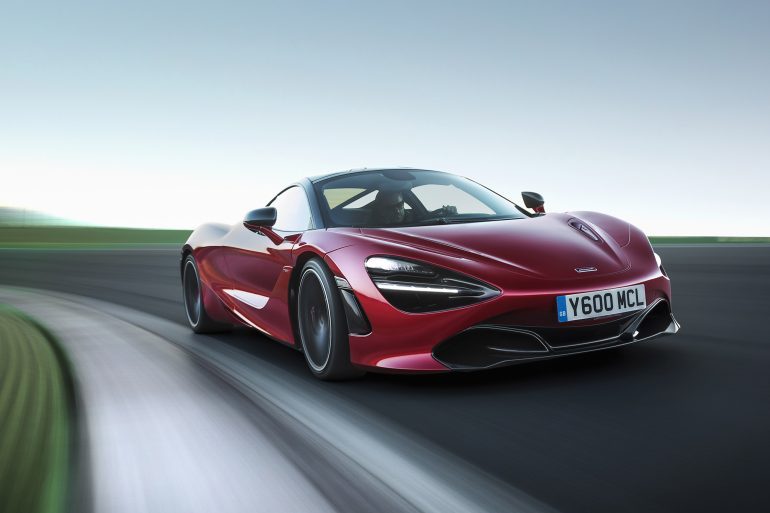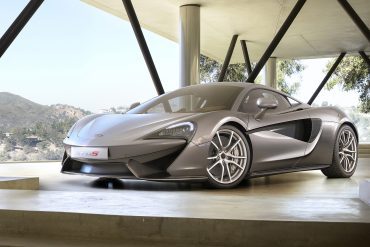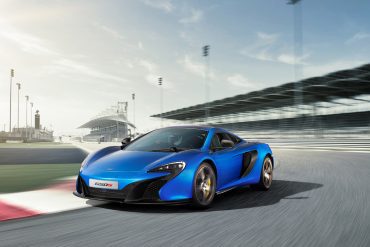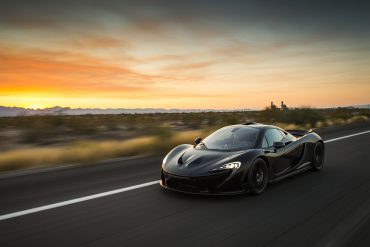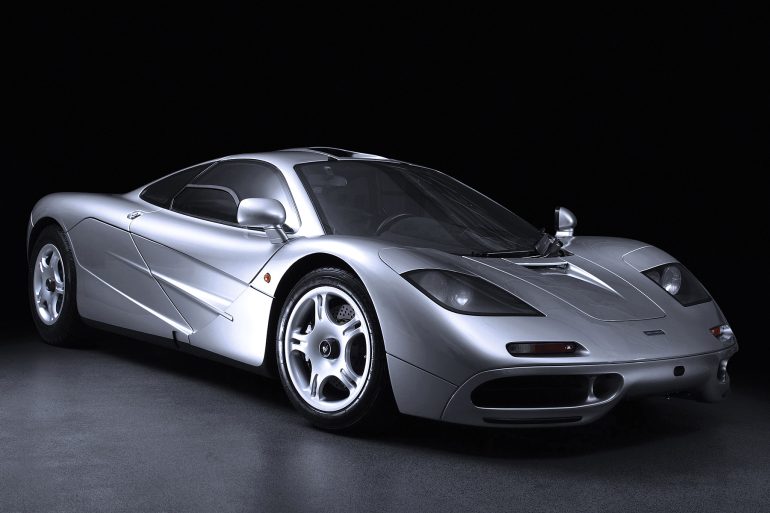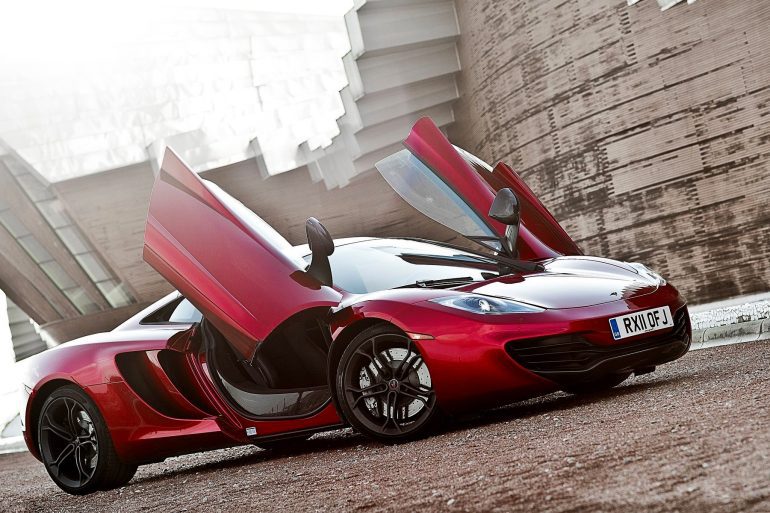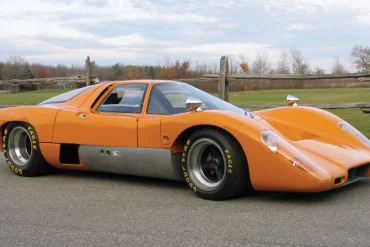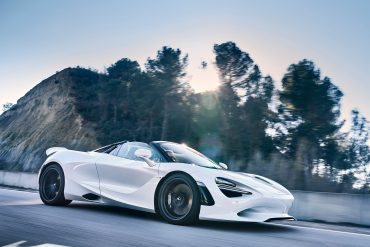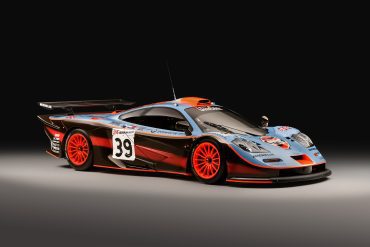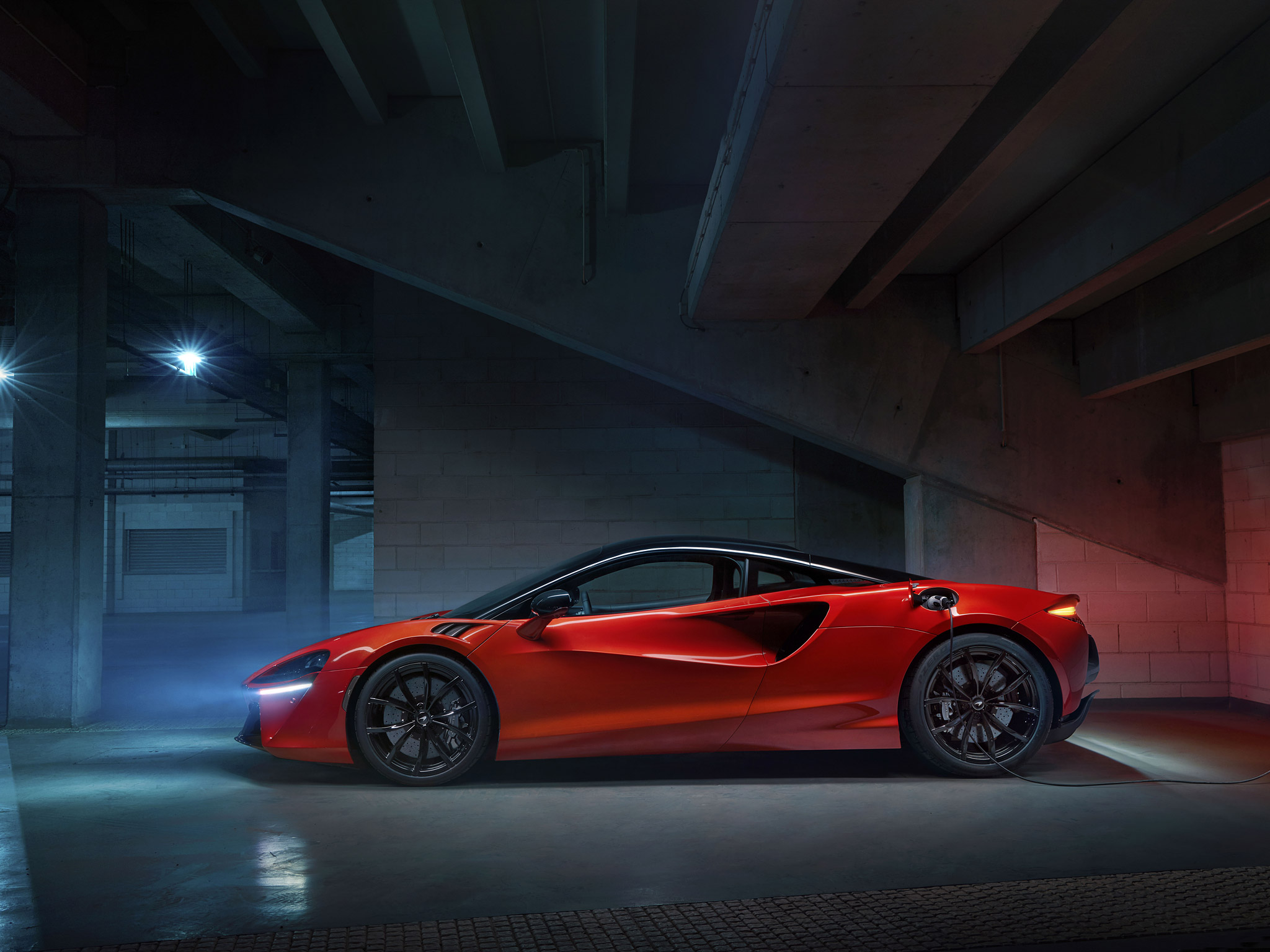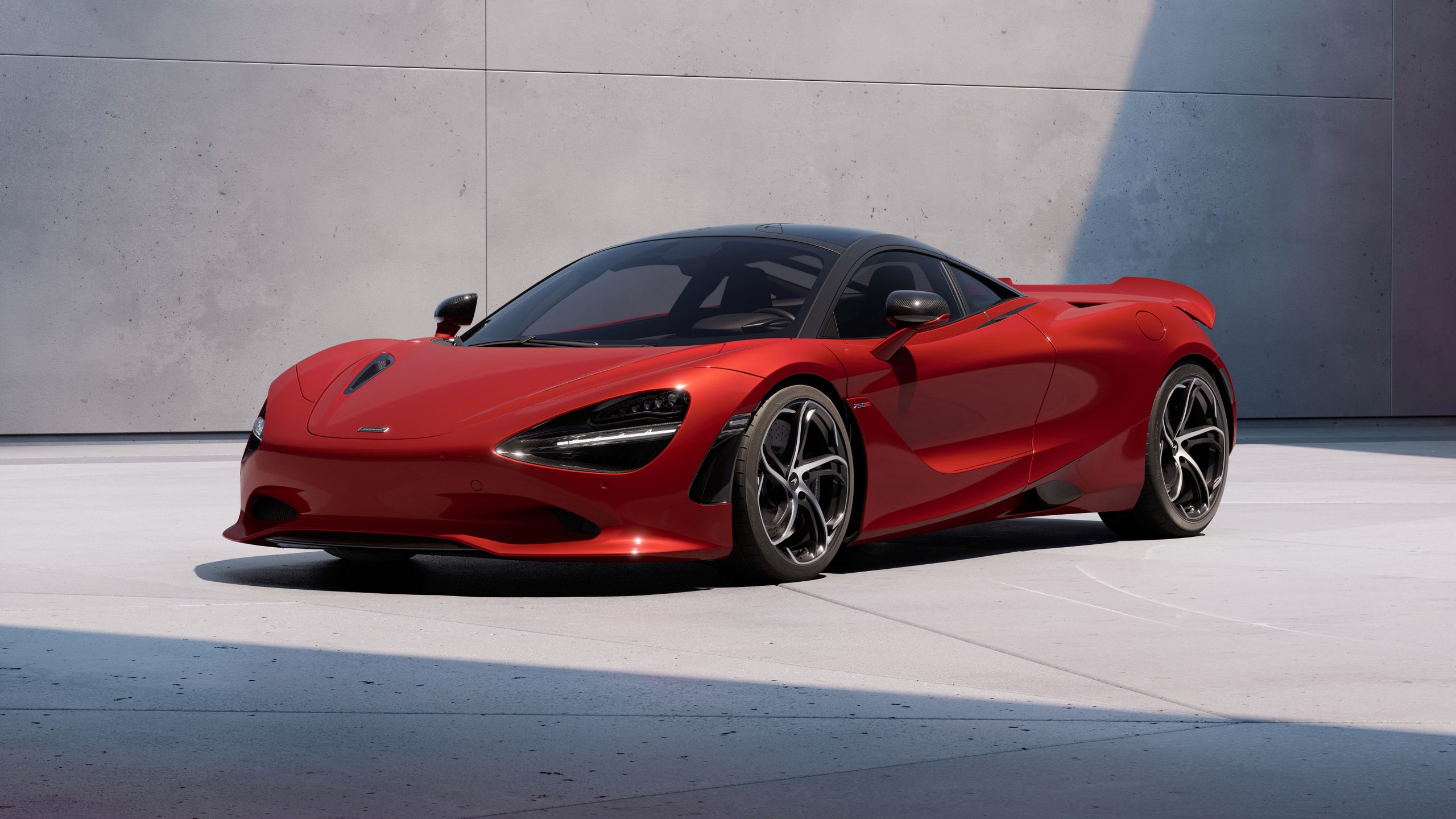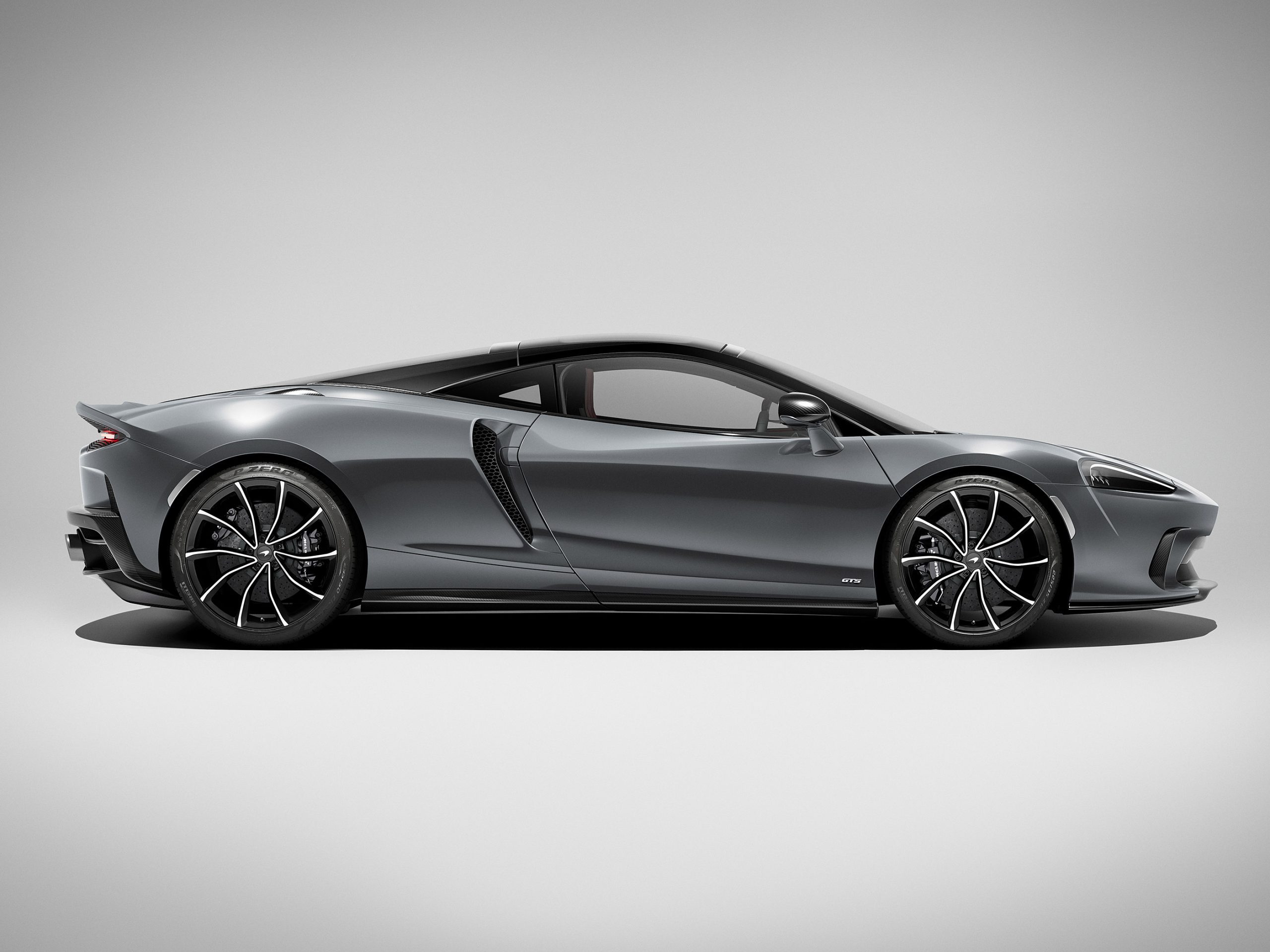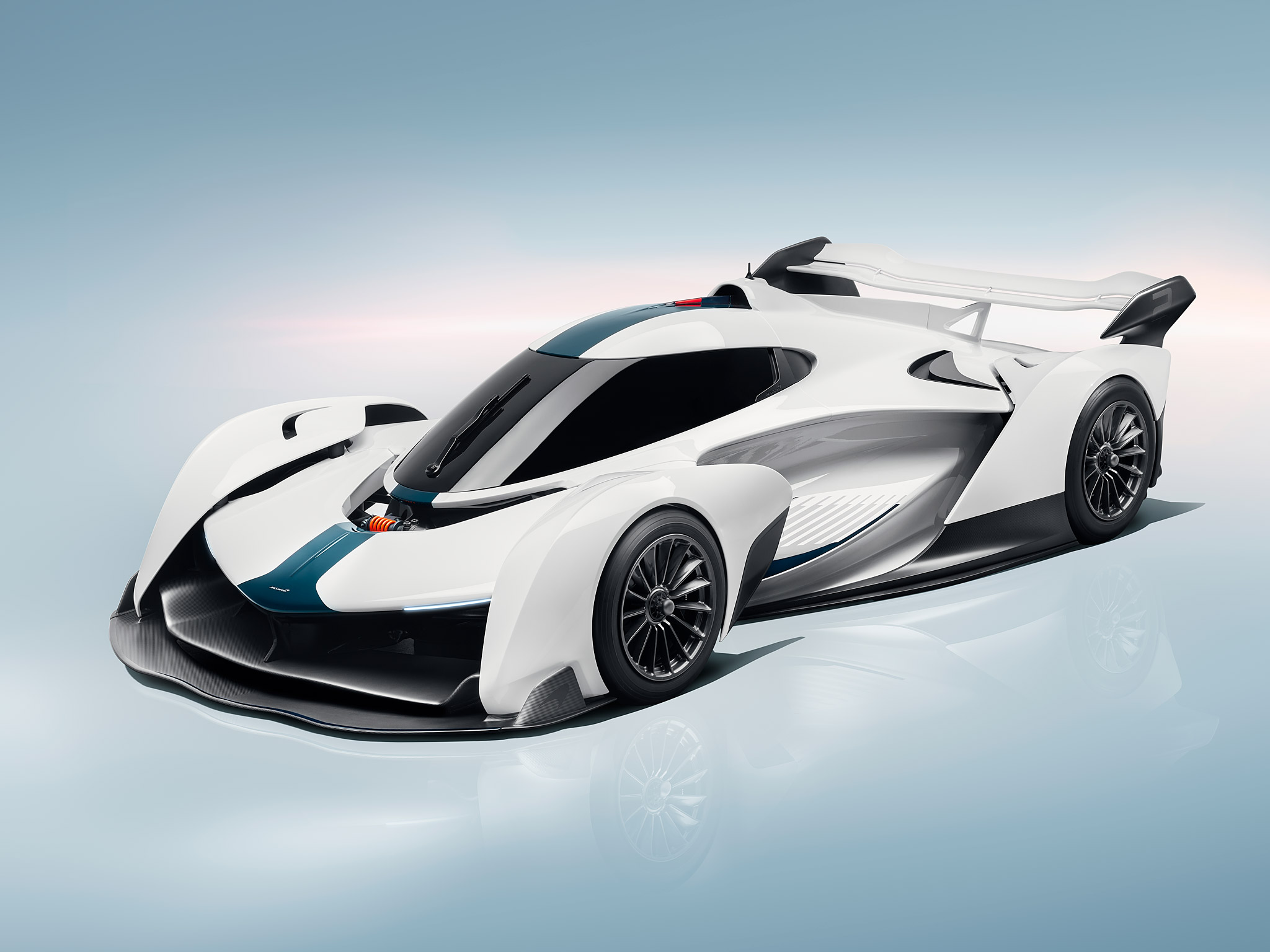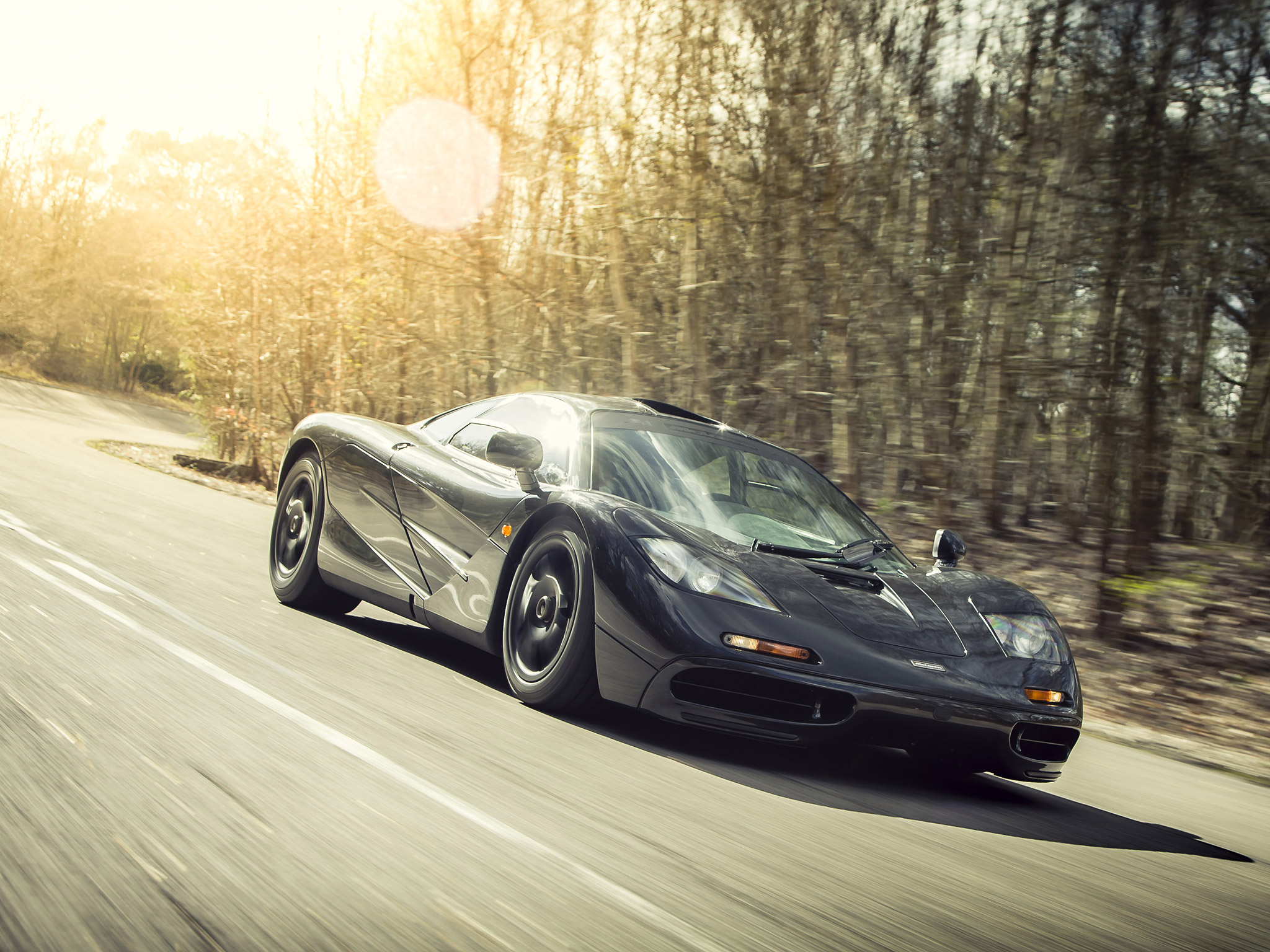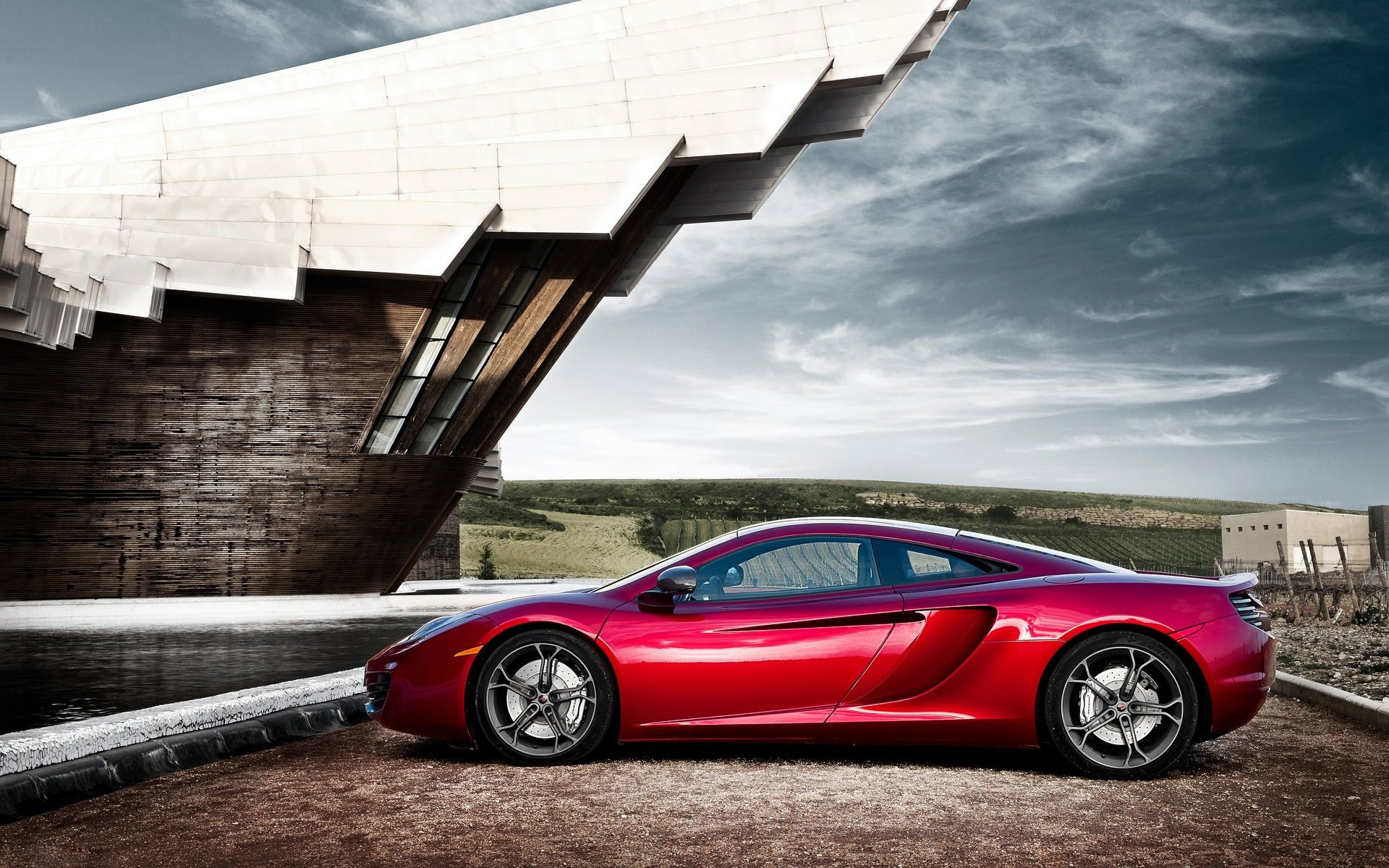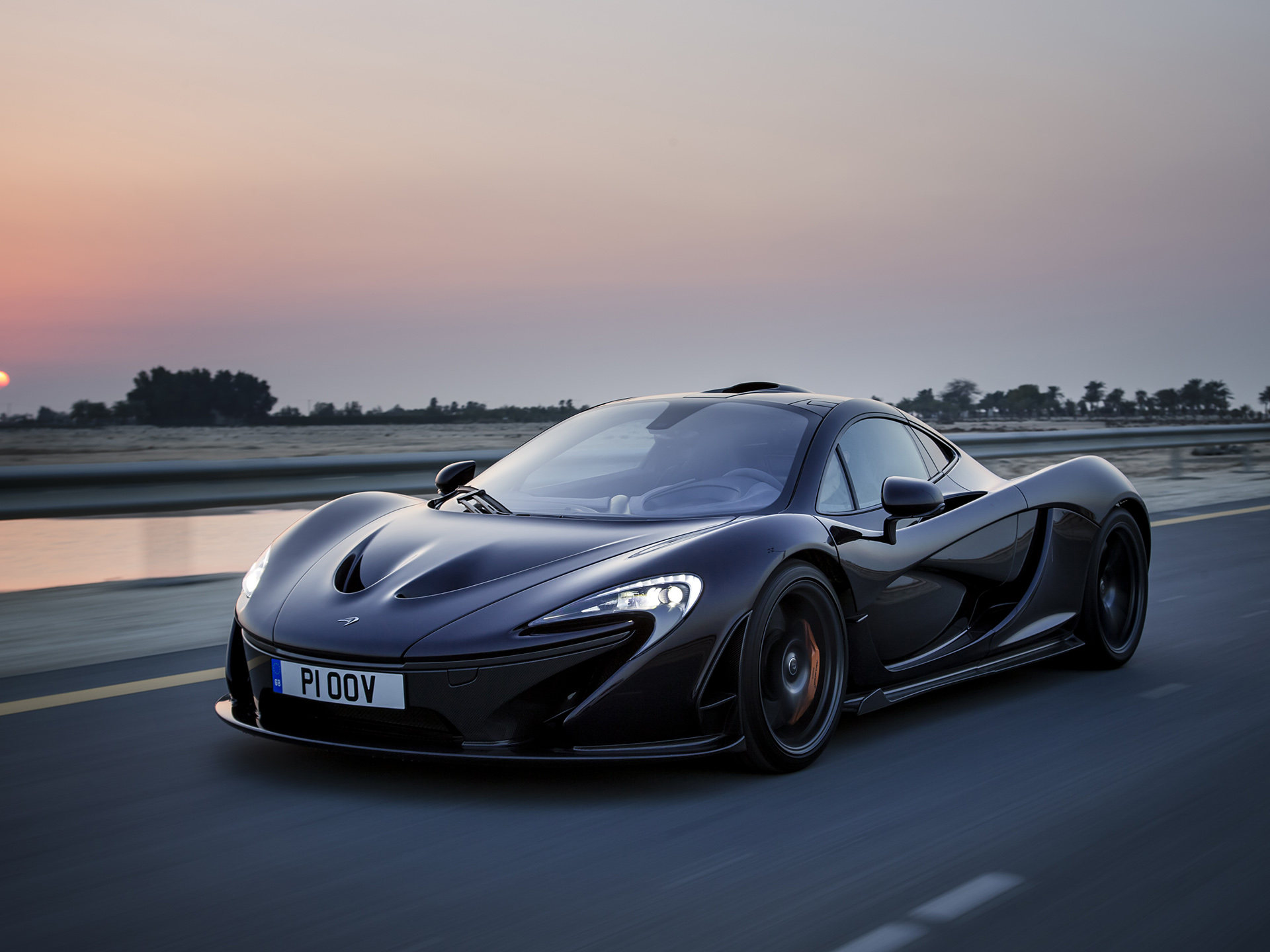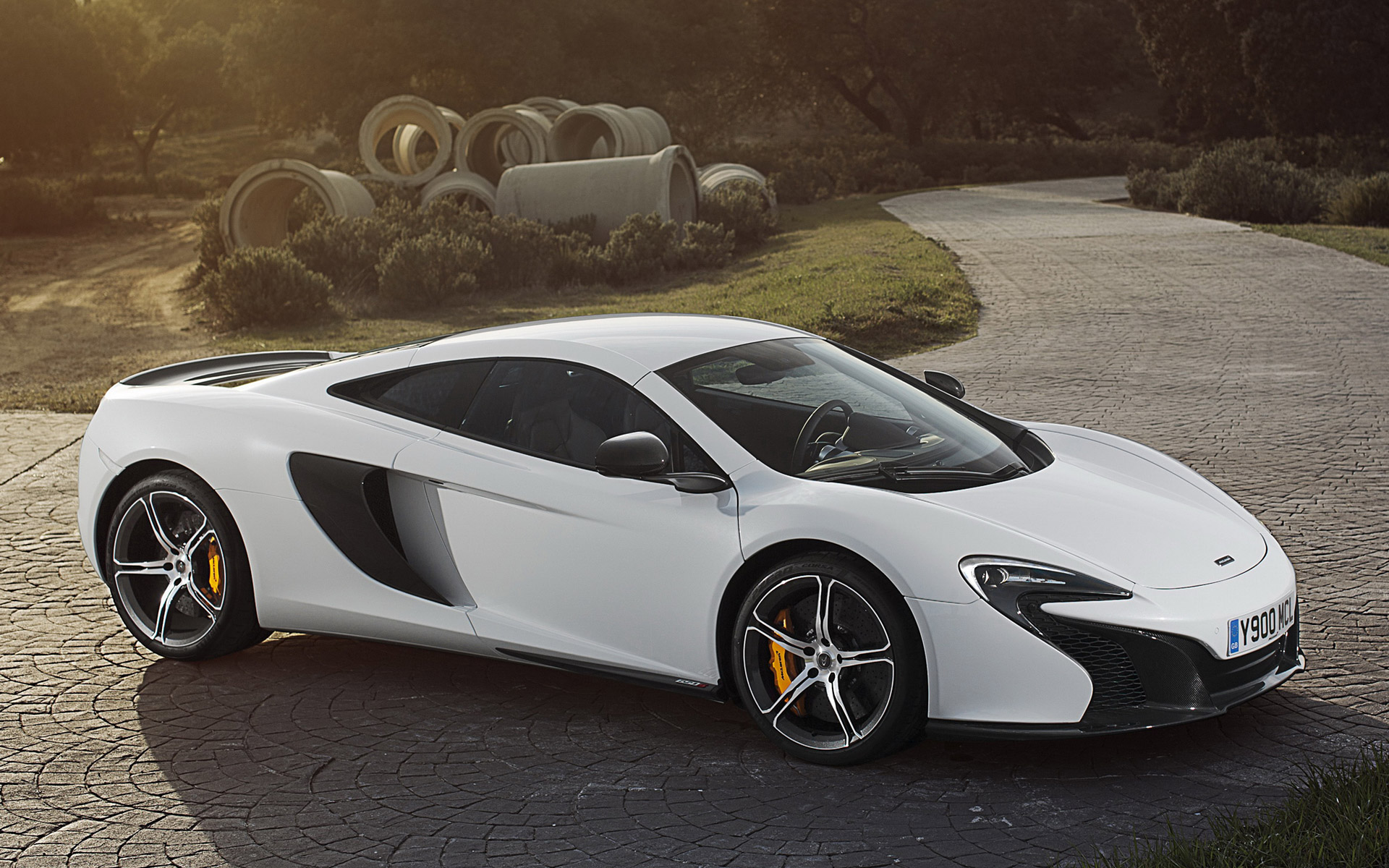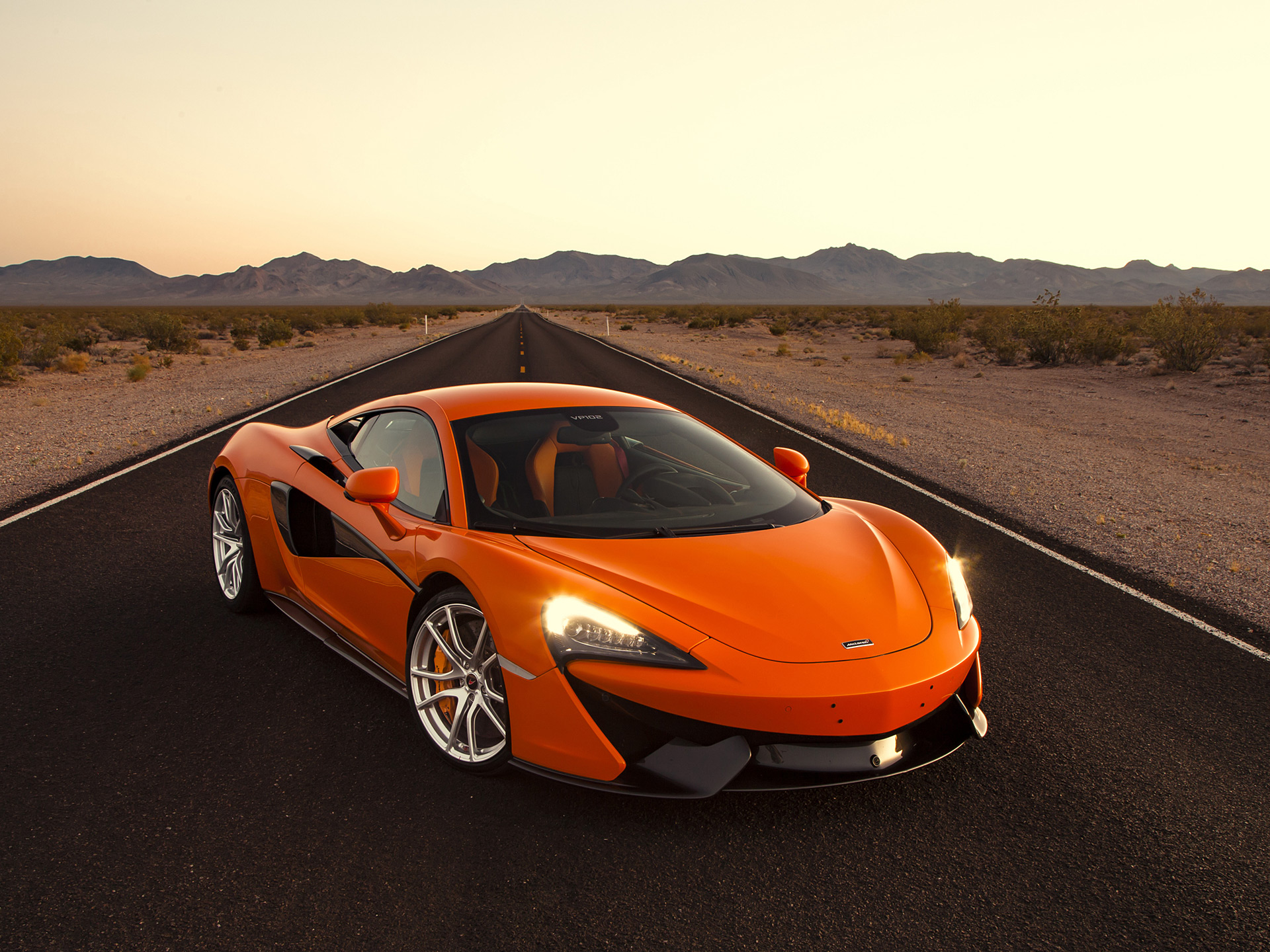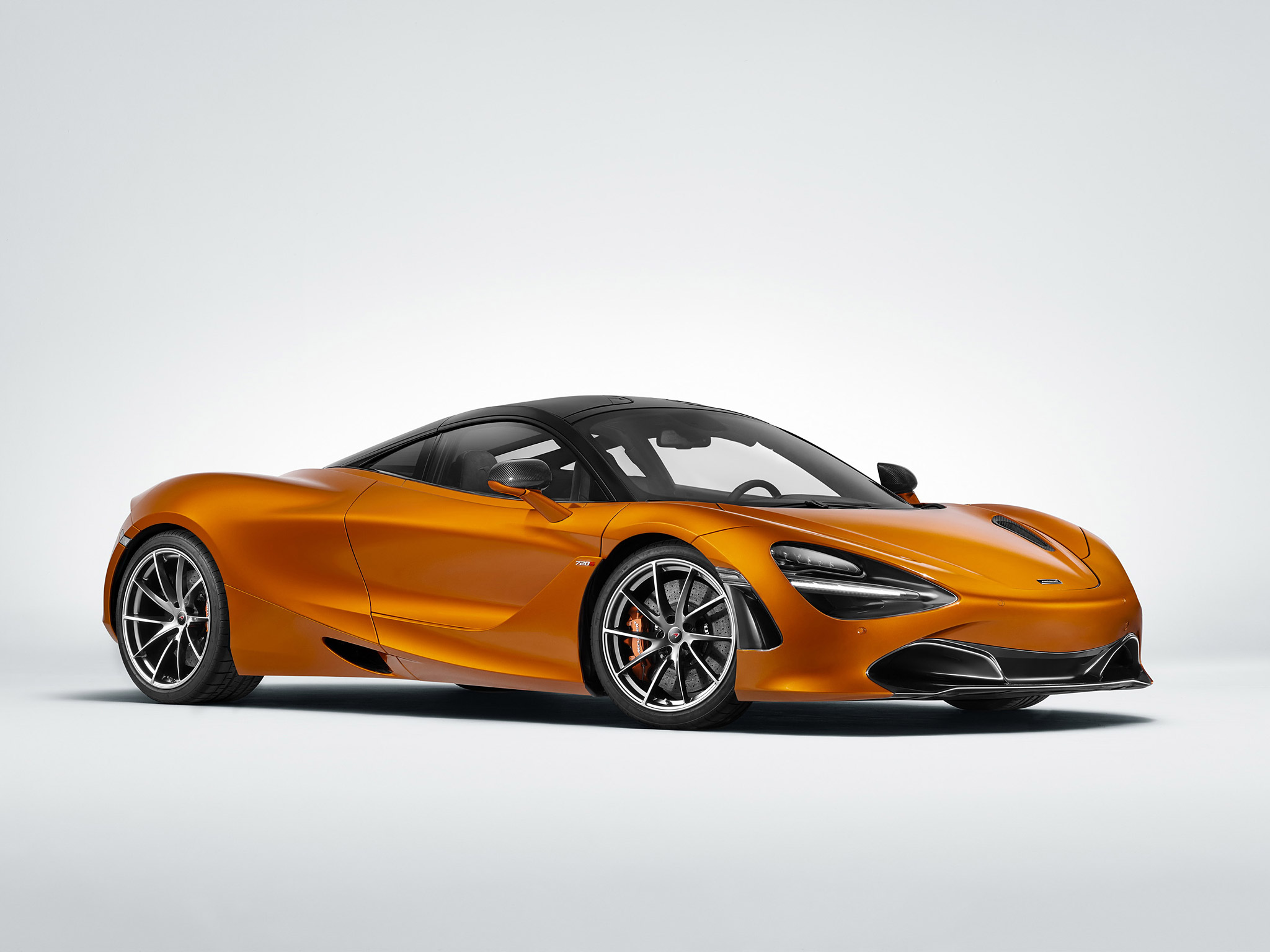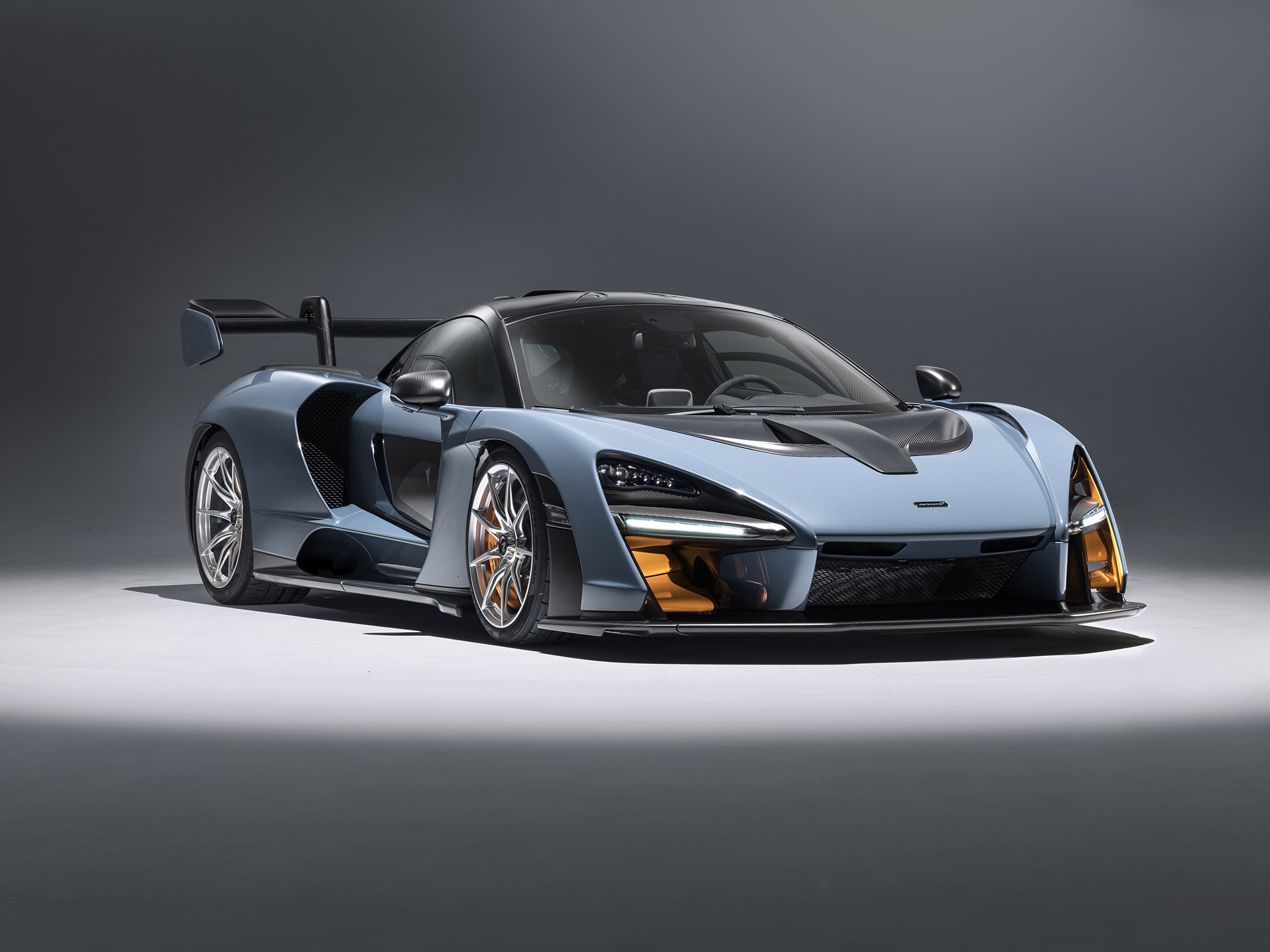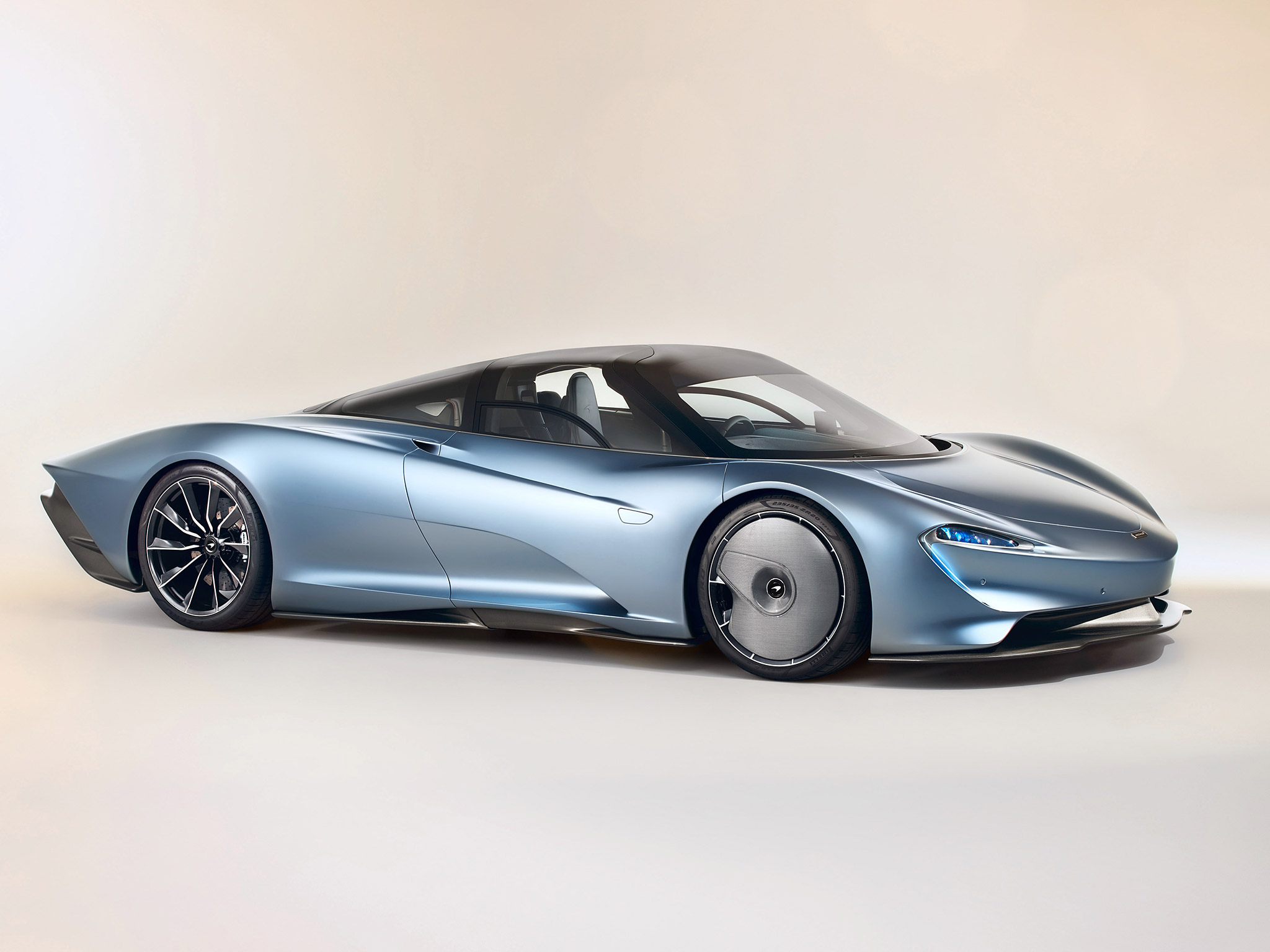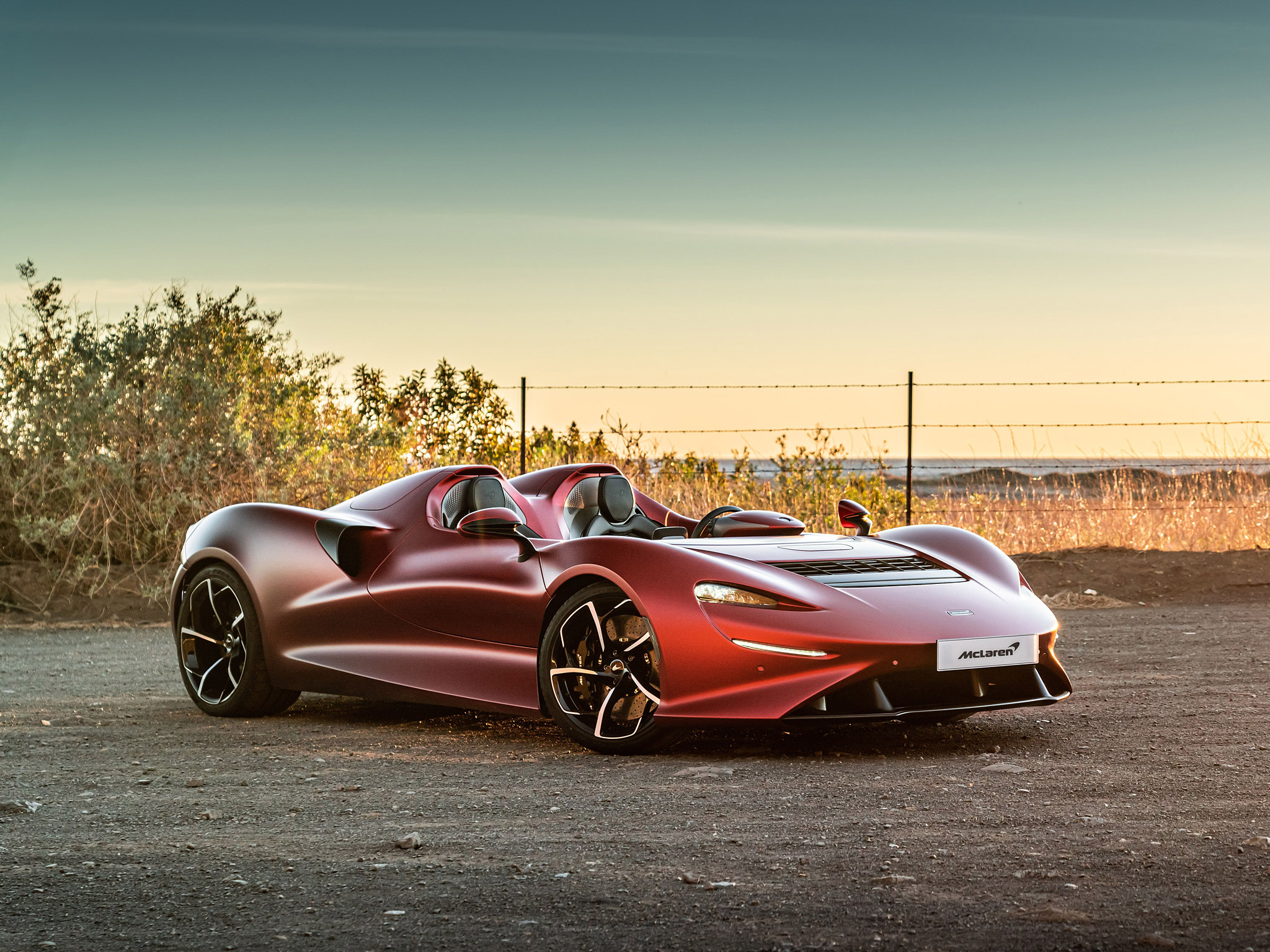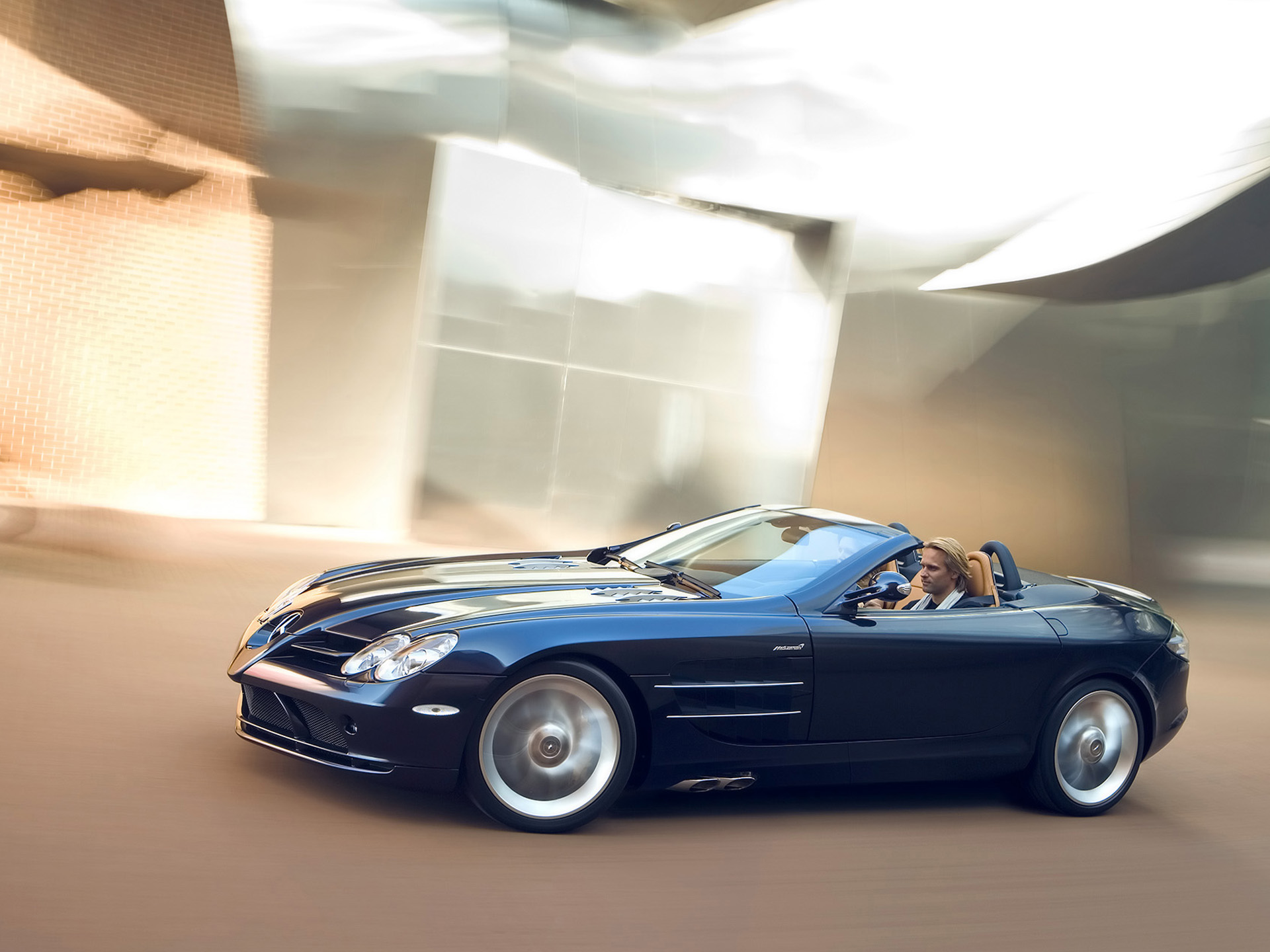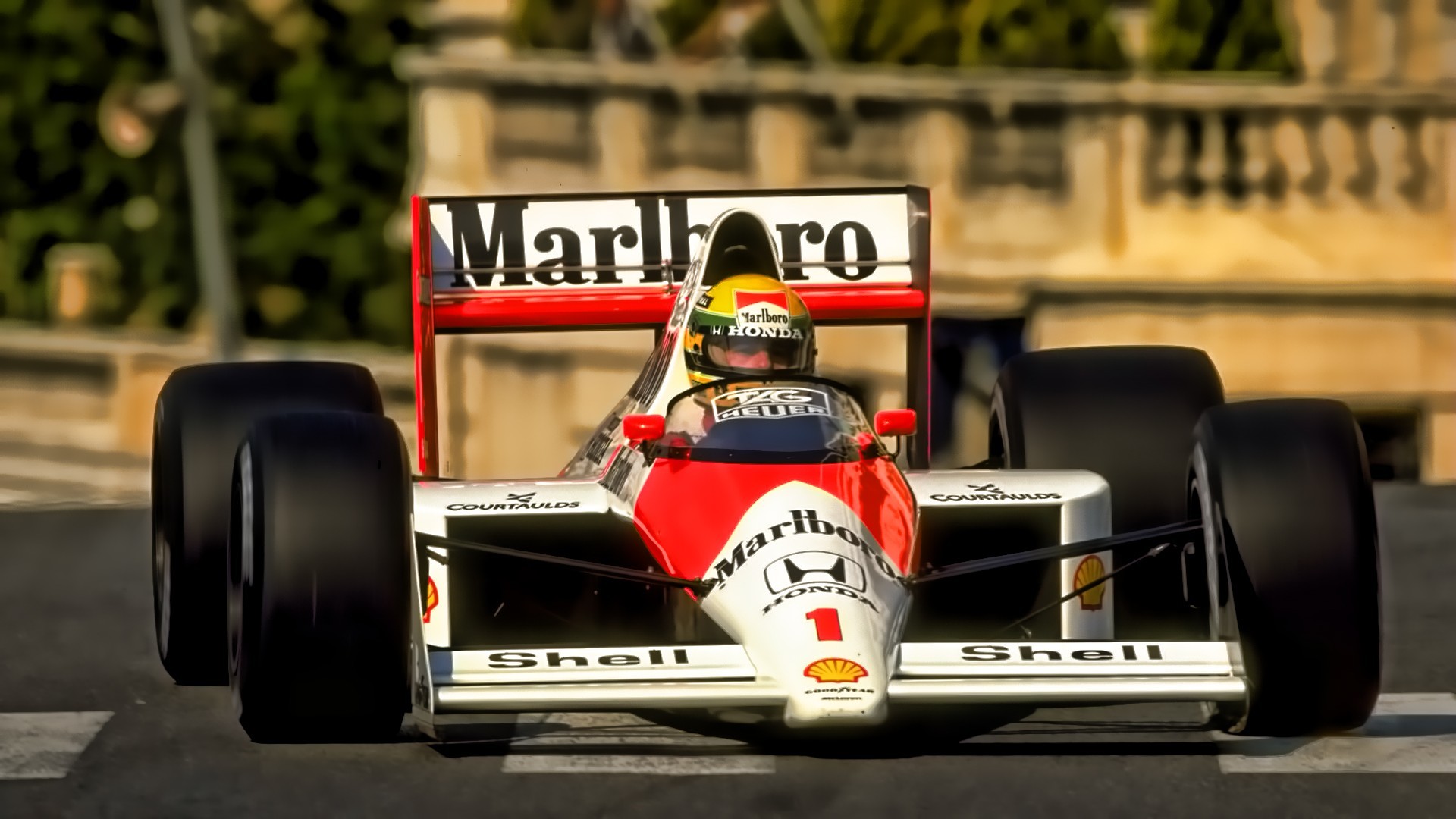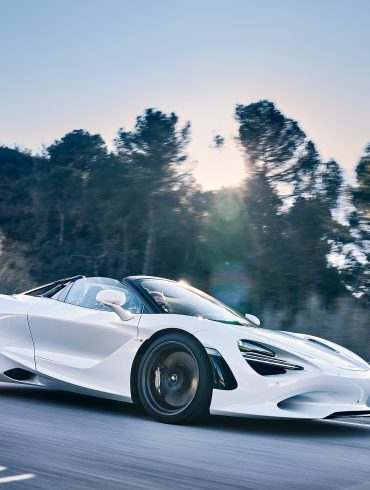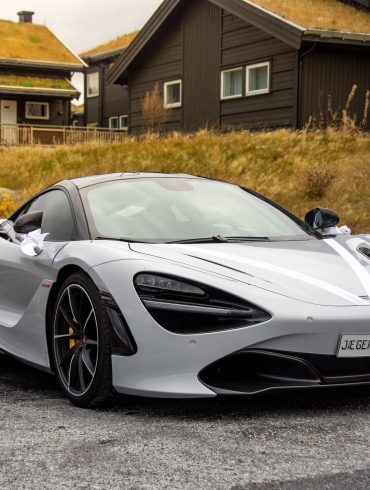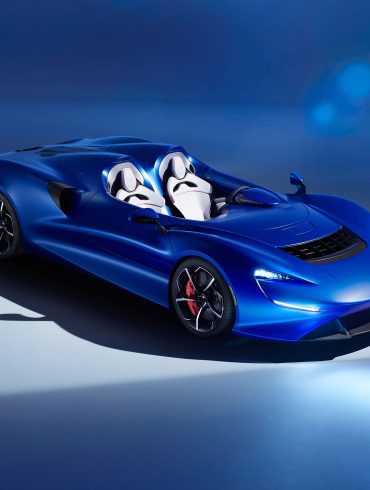McLaren Models
Model Deep Dives / Current Models / Legacy Models / Collaborations / Race Cars
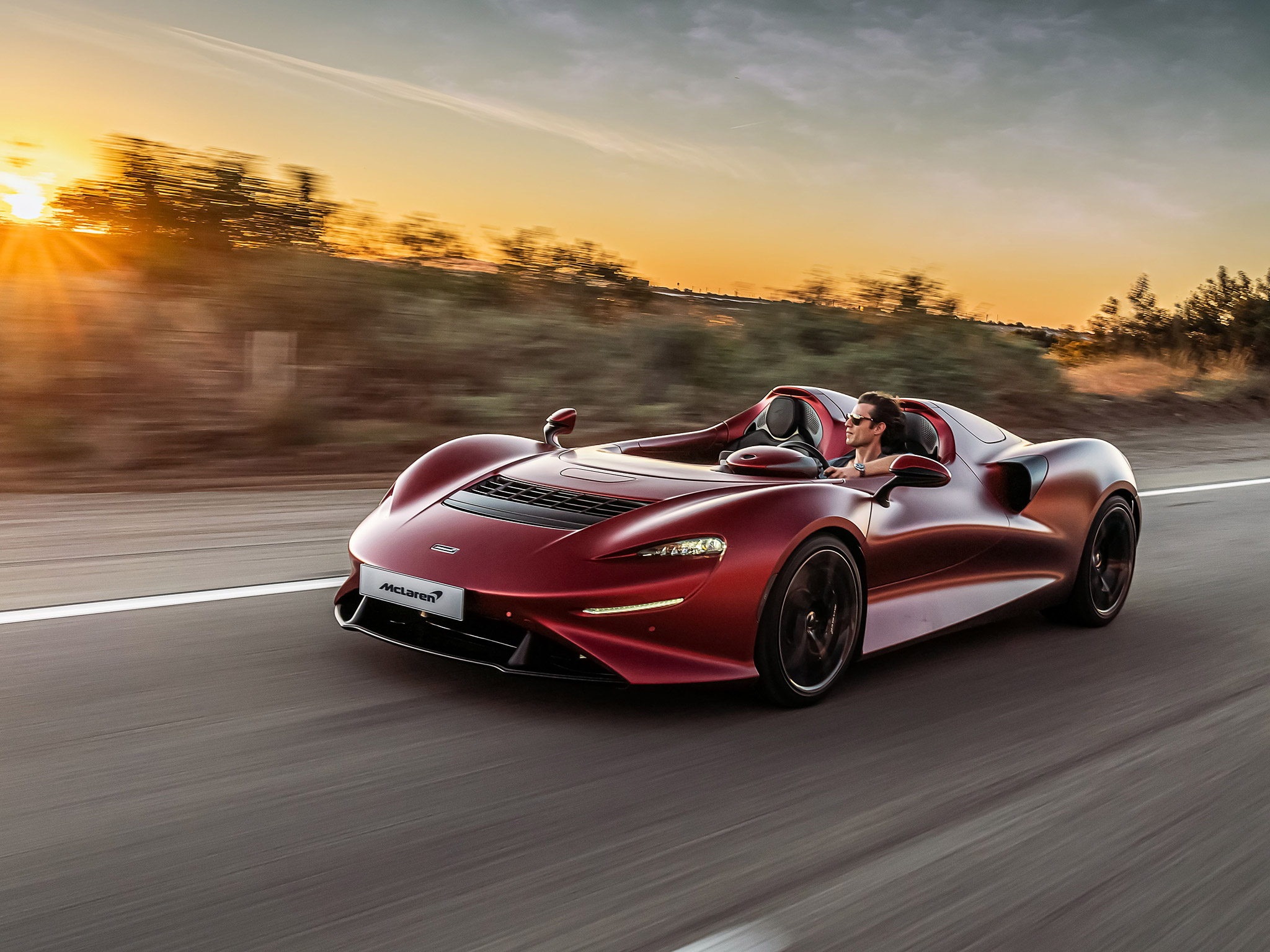
McLaren Model List. Every McLaren Car Ever Made.
Every McLaren car ever made in one place. Learn about every model the iconic McLaren company has ever created. We even included race cars. Most people know McLaren from its most recent years of rapid model expansion. At the time of writing McLaren had 12 current models for sale (plus two race cars for sale) to the general public. There is also the MSO team at McLaren who create one off and limited edition production models for those who want something truly unique and rare. Historically, McLaren had not been focused on production cars, instead specializing in racing cars for Formula 1 and GT series. McLaren did make some production cars prior to the launch of McLaren Automotive in 2010, best known of course if the McLaren F1. In our eyes it was the best supercar ever made. It changed the game so much and had such a fresh perspective that no other car will have that big an impact again. Before that was the M6GT, a stillborn project that was initially created to allow McLaren to race in Group 4 GT series, but was later shelved as a result of FIA rule changes that mandated 50 production examples before a car could be considered.
Legacy Models
McLaren Artura
The McLaren Artura ushers in a new era of supercar performance and sustainability as the brand's first series-production hybrid. It seamlessly blends blistering power with intelligent electrification, delivering exhilarating acceleration and improved fuel efficiency. The Artura's sculpted design harnesses the power of aerodynamics, while its lightweight construction enhances responsiveness and agility. Inside, a driver-focused cockpit melds luxurious appointments with cutting-edge technology for a thrilling and refined driving experience. The Artura represents a bold leap forward for McLaren, redefining the future.
McLaren Artura Variants
Production Models
McLaren Artura (2022 - Present)
McLaren Artura Spider (2025 - Present)
Special Models
McLaren Artura Trophy (2022)
McLaren Artura GT4 (2022)
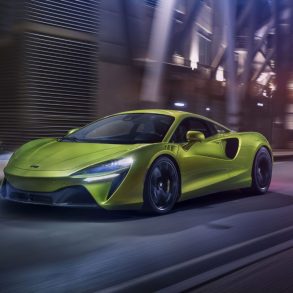
McLaren Artura
2022 - Present
The Artura is McLaren's next-gen high-performance hybrid. The supercar features a ton of new parts, including a new carbon-fiber chassis called the MCLA. It’ll house an entirely new powertrain and electrical architecture, too, riding on a platform optimized for the unspecified number of electric motors. Going to be insane.
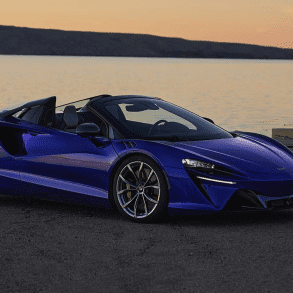
McLaren Artura Spider
2025 - Present
The 2025 Artura Spider comes with a retractable hardtop, a power increase, and a revised suspension. These same upgrades—sans the removable roof—also benefit the 2025 Artura coupe. McLaren claims the Artura Spider will rip to 60 mph in 3.0 seconds, with 124 mph arriving in just 8.4 ticks. Top speed is limited to 205 mph.
McLaren 750S
The McLaren 750S embodies the relentless pursuit of performance and engineering brilliance. With its sculpted bodywork, dihedral doors, and purposeful design, it commands attention both on the road and the racetrack. Under the hood, a ferocious, twin-turbocharged V8 unleashes 740 horsepower, catapulting the 750S to staggering speeds. Yet the 750S isn't merely about raw power. It boasts a lightweight carbon fiber chassis, advanced aerodynamics, and a driver-focused cockpit that ensure precision handling and telepathic responses. The 750S is a machine honed for pure driving exhilaration, improving on the 720S formula.
McLaren 750S Variants
Production Models
McLaren 750S (2024 - Present)
McLaren 750S Spyder (2024 - Present)
Special Models
McLaren 750S 3-7-59 Theme (2023)
McLaren 750S Spectrum Theme (2023)
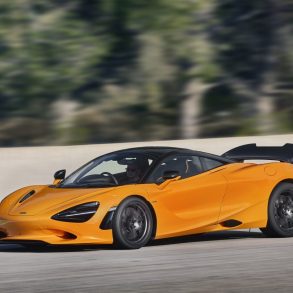
McLaren 750S
2024 - Present
The Best Supercar on the Planet. The new McLaren 750S replaces the legendary 720S, using its progenitor as a base to build up a whole new definition of supercar from. The 4.0L twin-turbo V8 has been reworked to now produce 740 HP, and more active and passive aerodynamics give it slightly lower top speed but much more ferocious acceleration.
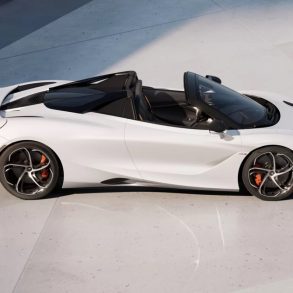
McLaren 750S Spider
2024 - Present
Roadster Perfection. What sets the 750S apart from most other drop-top supercars is that even with the roof down, it has the exact same performance as its coupe brother. That means 2.8 seconds to 60 mph, a 206 mph top speed, and a roof that raises or lowers in under 13 seconds, while moving at up 31 mph!
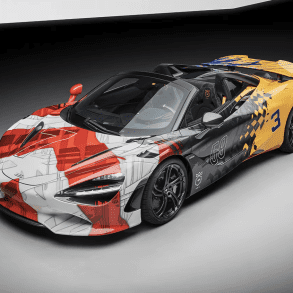
McLaren 750S 3-7-59 Theme
2023
6 units. The McLaren 750S 3-7-59 Theme is a bespoke and highly limited-edition livery that pays tribute to McLaren's historic 'Triple Crown' of victories in motorsport. Inspired by the cars that won the Indianapolis 500, Monaco Grand Prix, and 24 Hours of Le Mans, the 3-7-59 Theme features complex airbrushed graphics.
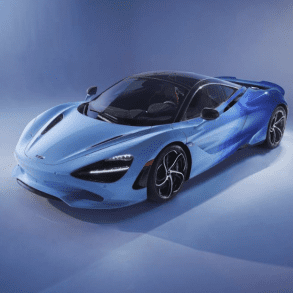
McLaren 750S Spectrum Theme
2023
Offers a bold contemporary take on the 750S, showcasing a vivid gradient of colors that transition from light to dark across the car's body. This striking effect is achieved with a meticulous paint process and included bespoke interior trims. Contrasts with the historically inspired 3-7-59 Theme.
McLaren GT/GTS
Forget the notion that supercars must be uncomfortable. The McLaren GT and GTS redefine the grand touring category, offering a thrilling supercar experience with surprising everyday usability. Beneath its flowing lines lies a potent twin-turbo V8 delivering effortless power, yet this GT can also soothe you with a comfortable ride and a spacious, meticulously crafted interior. The McLaren GT excels on long journeys, with generous luggage space and a luxurious cabin. Want a touch of open-air exhilaration? The GTS takes over from the GT in mid-2024, built on the same platform with a number of updates and upgrades across the board.
McLaren GT & GTS Variants
Production Models
McLaren GT (2019 - 2013)
McLaren GTS (2024 - Present)
Special Models
McLaren GT by MSO (2020)
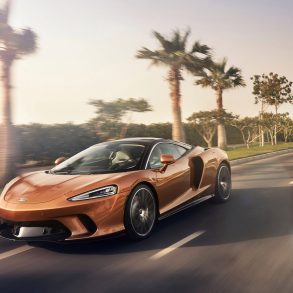
McLaren GT
2019 - 2024
The GT attempts to redefine the capabilities of a grand tourer. It boasts a striking design and is engineered for long trips that can be completed in comfort without compromise on performance. McLaren claims this is one of the quickest cars in its class and its nine-second sprint time to 124 mph surely lends credence to that assertion.

McLaren GTS
2025 - Present
Last year's McLaren GT has been facelifted and refreshed for 2025, and as part of that refresh it dons a new name: GTS. The twin-turbo V-8 engine gets a 14-hp bump to 626 horsepower. Styling enhancements include tweaks to the car's front bumper, subtle changes to the rear fenders, updated wheel designs and new colors.
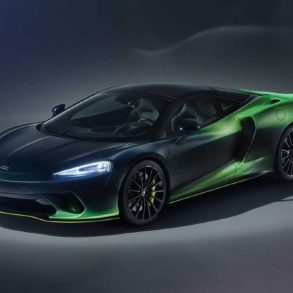
McLaren GT by MSO
2020
The satin tri-tone blend emerges and merges as you look from front to back of the GT. The colors fuse, fade, blend and contrast to mesmerizing effect. An incredible 430 hours of focused work. Verdant theme wears three new green paint colors (Horsell Green, Arbor, and Steppe Green).
McLaren Solus GT
McLaren is getting in on the hypercar track day craze with the single seater, closed cockpit Solus GT. The idea was born back in 2017 with the release of the Ultimate Vision concept car for the Gran Turismo Sport video game. From there McLaren decided to actually make the thing in a reality with a lot of the car’s design remaining intact. A top speed of over 200 mph is on the cards all whilst generating over 1,200 kilograms of downforce. The carbon composite bodywork has been designed to meet the aerodynamic needs of the Solus with some LMP race car inspiration thrown in.

McLaren Solus GT
2023
Powered by a Judd V10 engine, a far cry from the usual turbocharged McLaren engines, the Solus GT has 829 hp and 479 lb-ft of torque to play with. That peak power output hits at around the 10,000 rpm mark, meaning this V10 is sure to sound the part around the race track. The transmission is a seven-speed sequential gearbox with straight cut gears and multi-plate carbon fibre clutch, and the expected kerb weight should tip the scales at just over 2,000 lbs.
McLaren M6 GT
Bruce McLaren’s vision for the M6GT is the genesis for all McLaren road cars. Based on the latest race technology, the M6GT was superlight and blisteringly quick. Essentially, the M6 GT was a re-skinned, road-legal version of the M6A race car, and at 1,764 pounds, the M6 GT was extremely lightweight. The mid-engine McLaren M6 GT was powered by a modified, 5.7-liter Chevrolet LT1 V8 engine.
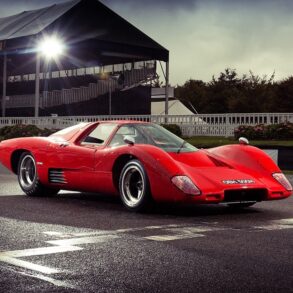
McLaren M6GT
1969
It all started here. Bruce McLaren’s vision for the M6GT is the genesis for all McLaren road cars. Based on the latest race technology, the M6GT was superlight, blisteringly quick, confidence inspiring and safe. Road-legal, but based essentially on a prototype race-car, the M6 GT had a cramped interior and no real semblance of usability or practicality. It did come with a Bartz-tuned Chevrolet engine that was totally insane.
McLaren F1
The McLaren F1 is a marvel of automotive engineering that shattered existing benchmarks and set new standards in the supercar world when it was introduced in 1992. Developed by McLaren Automotive, this car was not only the fastest production car of its time but also remains one of the most iconic supercars ever created. The F1 was born from a singular vision: to create the ultimate road car, uncompromised in its design and performance.
McLaren F1 Variants
Production Models
McLaren F1 (1992 - 1998)
McLaren F1 LM (1995)
McLaren F1 GT (1997)
Race/Special Models
McLaren F1 GTR (1995 - 1997)
McLaren F1 GTR Long Tail (1997)
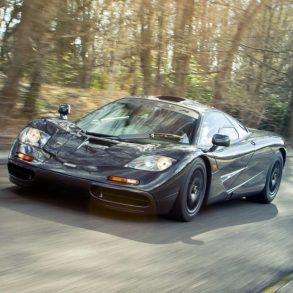
McLaren F1
1992 - 1998
The Greatest Ever. The McLaren F1 is world’s best supercar. Its top speed of 240 mph puts much of even today’s supercar crowd to shame, and ergonomic features like the driver-centered, three-seat cockpit have rarely been seen since. The McLaren F1 debuted in 1992. It was the cost-no-object approach to building a car and was such a leap ahead in almost every imaginable way that it changed way we think about supercars forever.

McLaren F1 LM
1995
Ultimate Version of Mighty F1. The F1 LM features the 1995 GTR engine without air restrictors. 18 inch magnesium wheels 76 kgs lighter than the standard F1. Upgraded aerodynamics & gearbox. To commemorate its success at Le Mans, McLaren unveiled this celebratory road-variant called the F1 LM. The LM was limited to just five examples, one for each of the F1 GTRs that competed. All 5 were painted Papaya Orange.

McLaren F1 GT
1997
All About The Downforce. McLaren wanted to create a car with more downforce than the standard F1 with less drag than the LM version offered. The result? This F1 GT with radical new body aerodynamics. McLaren built only three examples in 1997. The GT was actually the final incarnation of the road-going F1, developed as a homologation special for the race-spec 1995 - 1997 McLaren F1 GTR. The GT is the rarest F1.
McLaren 12C
The genesis of the 12C can be traced back to McLaren’s decision to expand its automotive division beyond Formula 1. The goal was to compete directly with established marques like Ferrari and Lamborghini. The 12C was designed to be the most technologically advanced supercar on the market, embodying the very essence of what McLaren stood for: innovation, efficiency, and performance. At the heart of the 12C was the MonoCell, a carbon fiber monocoque chassis and a 3.8-liter twin-turbo V8 engine, producing around 600 horsepower initially, which was later upgraded to 616 hp in subsequent versions.
McLaren 12C Variants
Production Models
McLaren 12C (2011 – 2014)
McLaren 12C Spider (2011 – 2014)
Special Models
McLaren MP4-12C HS (2012)
McLaren X-1 (2012)
McLaren 50 12C (2013)
Race Models
McLaren MP4-12C GT3 (2011)
McLaren MP4-12C Can-Am (2012)
McLaren MP4-12C GT Sprint (2013)
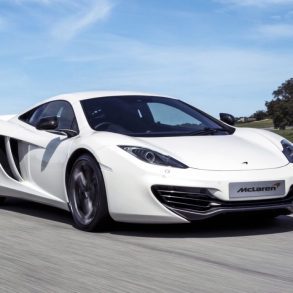
McLaren 12C
2011 - 2014
The Start of Modern-Day McLaren. Cutting-edge carbon-fiber composite structure, trick suspension that is part luxury part race car. You could drive the 12C supercar every day. Launched with 592bhp and later upgraded to 616bhp. The 12C wasn't perfect but it showed that McLaren could build a very good supercar out of the gate. McLaren worked on a replacement and improvement very quickly which is why we saw the 650S by 2014 to replace the 12C.
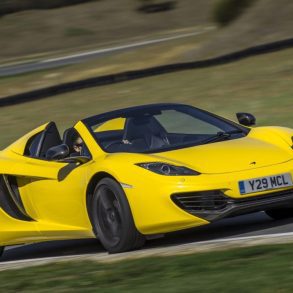
McLaren 12C Spider
2011 - 2014
More Exciting Than 12C Coupe. The inevitable convertible version of the MP4-12C supercar. With the same lightweight engine developing 616 bhp and unique folding roof system and carbon ‘MonoCell’ chassis identical to that of the 12C. It was the first time we ever remember a convertible being as stiff as a coupe (you really couldn't tell the difference when driving). As a result, it was more fun and exciting. Open top also helped with the sound from that twin turbo V8.

McLaren 50 12C
2013
50 Cars. The McLaren 50 12C and 12C Spider were built to celebrate our 50th anniversary in 2013, with 50 examples of each body style produced. The special edition featured a new part-carbon front bumper that boosted downforce, carbon ceramic brakes and lightweight wheels finished in satin black. The cabin was upholstered in full leather and carried a special anniversary plate to celebrate the anniversary.
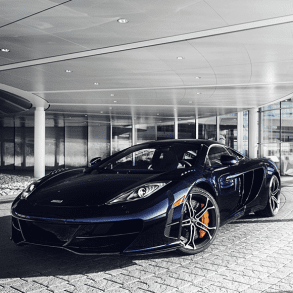
McLaren MP4-12C HS
2012
In 2012 McLaren Special Vehicle Operations built five special edition cars called the High Speed or MP4-12C HS. These were built for and named by The Collection in Miami for sale to the US market. The main feature of these bespoke cars is a revised body and more power over the standard model. Only five examples of the High Speed were produced and sold to The Collection in Miami with no press or official release.
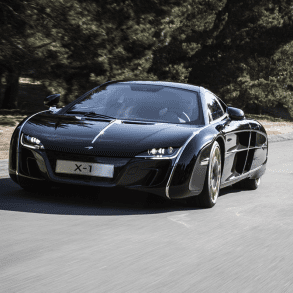
McLaren X-1
2012
The McLaren X-1 is a bespoke automotive enigma, a one-of-a-kind supercar commissioned by a mysterious enthusiast. Built upon the 12C, the X-1 boasts a completely unique body inspired by classic automotive designs. Think sweeping curves, flowing lines, and a healthy dose of retro-futurism. The X-1 is a testament to McLaren Special Operations' capabilities, especially when they take some drugs and get a little crazy.
McLaren P1
The McLaren P1, unveiled at the Paris Motor Show in 2012, is a hybrid supercar that is the spiritual successor to the legendary McLaren F1. Powered by a 3.8-liter twin-turbo V8 engine paired with an electric motor, it was one of the worlds first hybrid hypercars, delivering a combined output of 903 horsepower. This powertrain enables the P1 to accelerate from 0 to 60 mph in under 3 seconds and achieve a top speed electronically limited to 217 mph. Distinctively designed with active aerodynamics and a drag reduction system, the P1 excels in delivering both extraordinary performance and efficiency. Only 375 units ever made.
McLaren P1 Variants
Production Models
McLaren P1 (2013 - 2015)
Special Models
McLaren P1 MSO Carbon (2016)
McLaren P1 GTR Senna Special (2018)
McLaren P1 LM (2016 - 2017)
McLaren P1 GT (2018)
McLaren P1 Spider (2022)
Race Models
McLaren P1 GTR (2015 - 2016)
McLaren P1 GTR-18 (2020)

McLaren P1
2013 - 2015
Won Hybrid Hypercar War. Limited production run of 375. The P1 beat the hybrid hypercars from Porsche and Ferrari and showed people that hybrid hypercars could be astonishing from a performance perspective. Cool electric motor handily fill in the torque hole left by turbo lag. One of the best ever.
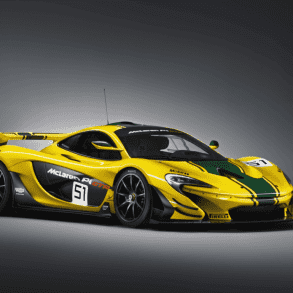
McLaren P1 GTR
2015 - 2016
The first McLaren to use the GTR moniker was the McLaren F1 GTR that won the 1995 Le Mans 24 Hours. Without road-car regulations to hold it back, the McLaren P1 GTR was an extreme track car. It was only offered for sale to P1 owners and include participation in driving events at some the world’s most iconic circuits.
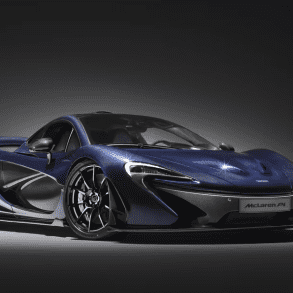
McLaren P1 MSO Carbon
2016
To start off, the full carbon fiber body is hand-laid and set with a bespoke Lio Blue lacquer. In addition to the Lio Blue carbon fiber body, MSO also dressed up this P1 with a gloss black finish to the wheels, and a gold exhaust heat shield.
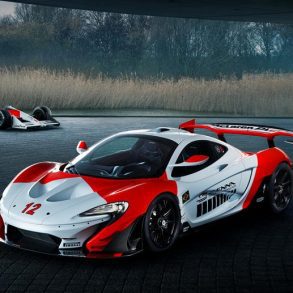
McLaren P1 GTR Senna Special
2018
Built to celebrate the McLaren MP4/4 F1 car Ayrton Senna raced to complete dominance in 1988. A one-off P1 GTR that a collector commissioned to be built and its not just livery because it has a unique engine specification.
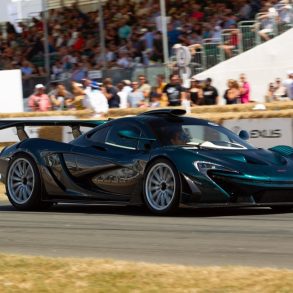
McLaren P1 LM
2016 - 2017
McLaren P1 GT conversion at the Goodwood Festival of Speed. Based on a P1 GTR, the firm sculpts longtail bodywork. A wealthy customer from the Middle East allegedly commissioned the special design.

McLaren P1 GT
2018
Lanzante built a new special based on the P1 GTR, commissioned by two different McLaren VIP customers. Includes more aggressive bodywork including a longer rear section, a larger rear wing, a longer front splitter and a quad exhaust system.
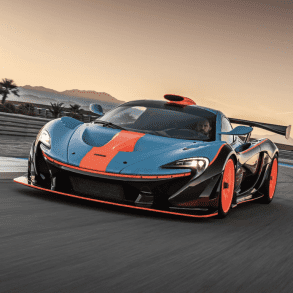
McLaren P1 GTR-18
2020
In April 2020, Lanzante Motorsport revealed that it would do six more road legal conversions of the P1 GTR. This conversion uses the same Longtail bodywork found on the P1 GT plus new rear wing, larger front splitter, and louvers for downforce.

McLaren P1 Spider
2022
In June 2022 at the Goodwood Festival of Speed, Lanzante unveiled the P1 Spider. The company is offering 5 conversions. First car were delivered in 2022 and the entire run finished by 2023. Cost was £2.4m.
McLaren 650S
The McLaren 650S, introduced in 2014, is a critical milestone in the evolution of McLaren's road-going supercar offerings. Positioned as a successor to the MP4-12C, the 650S forms part of McLaren's Super Series and represents a blend of track-focused performance with the daily usability of a luxury sports car. It many way the 650S fixed the issues with the 12C and made McLaren more of a competitor. Available in both coupe and spider, there were also some special 650S based cars like the 675LT.
McLaren 650S Variants
Production Models
McLaren 650S (2014 – 2017)
McLaren 650S Spider (2014 – 2016)
McLaren 625C (2015 - 2016)
McLaren 675LT (2015 - 2017)
McLaren 675LT Spider (2016 - 2017)
Special Models
McLaren MSO Coupe (2014)
McLaren MSO Spider (2014)
McLaren 650S Can-Am (2015 -2016)
McLaren 650S Le Mans (2015 - 2016)
McLaren MSO 650S (2014)
McLaren MSO Carbon Series (2017)
McLaren MSO HS (2016)
Race Models
McLaren 650S Sprint (2015)
McLaren 650S GT3 (2015)
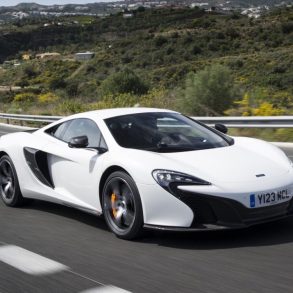
McLaren 650S
2014 - 2017
When 12C sales took a nosedive, McLaren went to work quickly creating its successor, the 650S. The front bumper gives the McLaren 650S a dramatic, yet clean appearance that makes the 12C look plain. It is also quicker, more assertive and dynamically better than the 12C. At 150 mph, downforce levels were 24 percent higher than the 12C. The steering reveals more feel than the 12C and engine also sounds better.
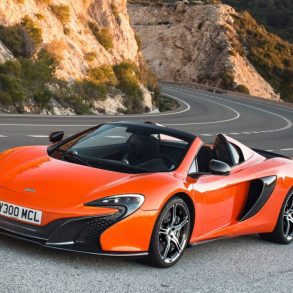
McLaren 650S Spider
2014 - 2017
Mechanically identical to the 650S Coupé, fitted with the M838T twin turbo V8 engine, producing 641 bhp and 500 lb ft. This means a sub 3.0 second sprint to 60 mph, identical to the Coupé. It drives just as well as the coupe, but the open top just gives the car so much more drama and it makes it feel more special. The weight penalty for the convertible is only 80lbs, which is nothing in the scheme of things.
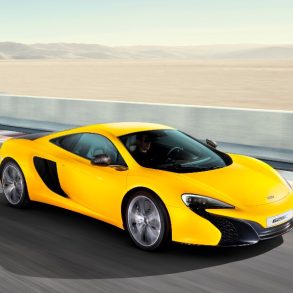
McLaren 625C
2015 - 2016
Woking introduced a road-legal iteration specifically tailored for the Asian market. Dubbed 625C, with "C" standing for "Club", the 650S-based model represented McLaren’s idea of a sports car that focuses on day-to-day usability and comfort without compromising the performance and race-bred feel of the original car. The 625C is fitted with new dampers and a revised suspension setup, with softer spring rates.
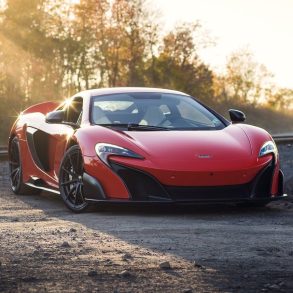
McLaren 675LT
2015 - 2017
A lighter, faster and more hardcore version of the McLaren 650S. Track-focused but still absolutely scintillating on the road. Nothing less than one of the greatest automotive experiences ever. Top Gear said: "Nothing less than one of the greatest automotive experiences ever. The bald performance figures tell some of the story...deliver the most focused driving experience imaginable".
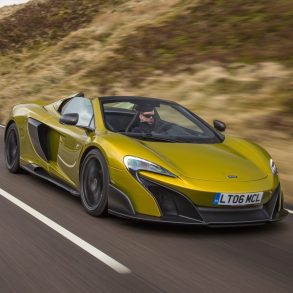
McLaren 675LT Spider
2016 - 2017
Nearly Perfect Open Sports Car. With the same 3.8-liter twin-turbo V8 as the Coupe with its 666hp and 516 lb-ft of torque. Reaching 60 mph from a standstill takes just 2.9 seconds, making it a tenth of a second faster the 488 Spider. Game on. EVO magazine said it best: Just as talented as the fixed-roof 675LT, the Spider is fast, fun and involving. And already sold out...". Maybe a used one then?
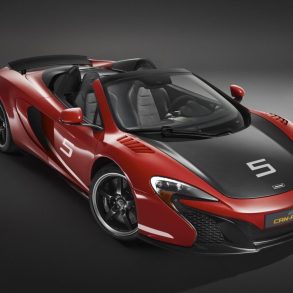
McLaren 650S Can-Am
2015 - 2016
50 Cars. Made to honor McLaren’s five back-to-back drivers’ titles in the Canadian-American Challenge Cup from 1967 to 1971. The 650S Can-Am features unique carbon fibre bodywork, Can-Am-inspired forged alloy wheels, a bespoke polished stainless steel exhaust, and Papaya Spark, Mars Red and Onyx Black exterior colour schemes.
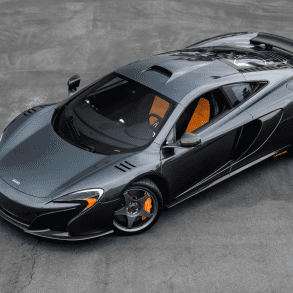
McLaren 650S Le Mans
2015 - 2016
50 Cars. Built to celebrate the 20th anniversary of McLaren’s win at the 1995 24 Hours of Le Mans, the 650S Le Mans pays tribute to the McLaren F1 GTR. A comprehensive design was created in consultation with Peter Stevens, the man who designed the McLaren F1 alongside Gordon Murray. It also has unique lightweight wheels inspired by the motorsport-specification rims.
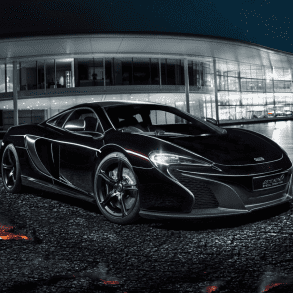
McLaren MSO 650S
2014
50 Cars. Based on the MSO 650S Coupe Concept, the MSO 650S is a limited edition restricted to just 50 cars, with a myriad of styling and performance upgrades. Carbon fibre detailing includes extended MSO door ‘blades’ to enhance airflow and a more aggressive rear diffuser. It wears 10-spoke ultra-lightweight alloy wheels held in place with titanium wheel bolts.
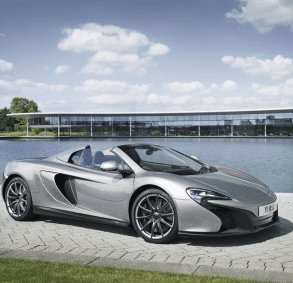
McLaren MSO 650S Spider
2014
Just 50 examples of the MSO 650S will be available globally, available in either a Coupe or Spider bodystyle. The production car made its global debut, in Spider form, at the Goodwood Festival of Speed in the Supercar Paddock. The exterior design is finished with a set of Palladium colored 10-spoke Super Lightweight alloy wheels, with a unique diamond cut effect to the inside edge of each spoke.
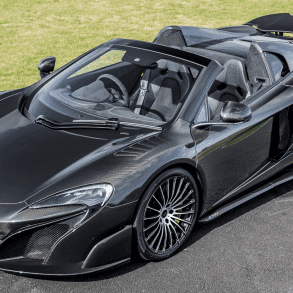
McLaren MSO Carbon Series
2017
25 Cars. Based on the 675LT Spider, the Carbon Series LT was produced in response to requests from McLaren customers captivated by the visual carbon fibre bodied McLaren P1. Staying true to the ‘Longtail’ ethos, the MSO Carbon Series LT was developed with a focus on light weight and optimised aerodynamic performance. Gloss carbon fibre on entire body further brings a brutal beauty to the 675LT Spider body.
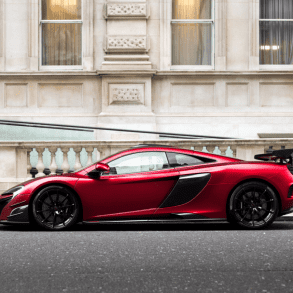
McLaren MSO HS
2016
25 Cars. The 679-horsepower MSO HS (for High Sport) and it’s ridiculous. For context, the McLaren MSO HS sits squarely between the McLaren 675LT and the mighty McLaren P1. The MSO HS is based on the McLaren 650S and is limited to just 25 example. The biggest differences appear in the body. The roof, hood, front bumper, and wing – which is inspired by the McLaren P1 GTR – are all made out of carbon fiber.
McLaren 570S
The McLaren 570S represented the core of McLaren's Sports Series and introduced a blend of everyday usability with extraordinary performance. Launched in 2015, the 570S is built on the innovative MonoCell II carbon fiber chassis and was powered by a 3.8-liter twin-turbo V8 engine with 562 horsepower. Derivatives of this platform included the 570GT, which offered additional comfort and practicality, the 570S Spider which all about open-top driving fun as well as some race cars and and the epic 600LT and 600 LT Spider. Who said you can't have it all.
McLaren 570S Variants
Production Models
McLaren 540C (2015 - 2020)
McLaren 570S (2015 – 2021)
McLaren 570S Spider (2016 – 2021)
McLaren 570GT (2017 - 2021)
McLaren 600LT (2018 - 2021)
McLaren 600LT Spider (2019 - 2021)
McLaren 620R (2019 - 2021)
Special Models
MSO 600LT Segestria Borealis (2016)
‘Racing Through The Ages’ (2018)
McLaren MSO X (2018)
McLaren 570GT MSO Cabbeen (2019)
McLaren MSO 600LT Coupe (2019)
MSO 600LT (Pikes Peak) (2020)
Race Models
McLaren 570S GT4 (2016)
McLaren 570S Sprint (2016)
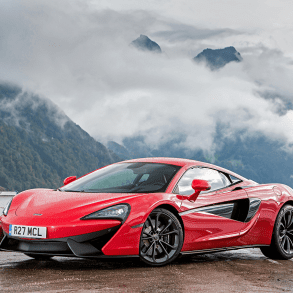
McLaren 540C
2015 - 2020
Entry Level Assassin. A mid-mounted 533-hp 3.8-liter twin-turbo V8 drives the rear wheels of the 540C. This is McLaren’s entry level model. Despite its lower price, the 540C inherits performance-aiding technologies from its pricier siblings such as a system that brakes a rear wheel to help the car around a corner. 0-62mph in 3.5 seconds, 0-124mph in 10.5 seconds.

McLaren 570S Coupe
2015 - 2021
For The Driver. This is the car you buy when you are sick of your Porsche. It is a true sports car experience, very driver centric with epic performance. We have found the 570S as the perfectly positioned car in the McLaren range. It has more performance than you could ever need on the road. It is lightweight, has direct steering and amazing driving dynamics.
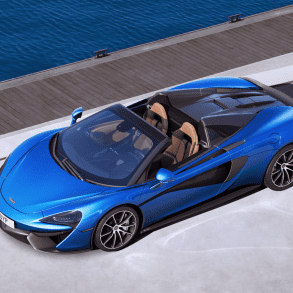
McLaren 570S Spider
2016 - 2021
Perfect Open Top Fun. Basically a 570S with a retractable hardtop, the 570S Spider is awesome. Gone are the days where convertibles were compromised, McLaren it seems has figured out how to make them as good as their coupe siblings. The Spider has the same twin turbo V8 as the coupe as well as the same carbon fibre MonoCell II chassis. Probably the best all-rounder.
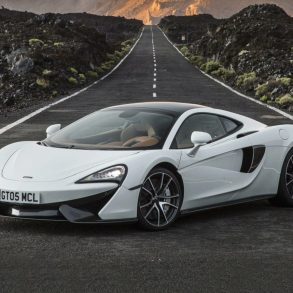
McLaren 570GT
2017 - 2021
Practical, Fast, Luxurious. The 570GT is an interesting model now that McLaren has launched a focused GT model. It adds extra comfort and practicality to the 570 body style. Performance is still tremendous, but it takes the edge off in some ways (which is good). Every bit a McLaren, it’s optimized for the road and makes the ultimate experience that’s perfect for daily use.

McLaren 600LT Coupe
2018 - 2021
Track-Focused Extreme. The limited-edition 600LT is the ultimate version of McLaren’s 570S/GT range (think of it like the 458 Speciale as to the 458). It uses a variation of 570S’ McLaren’s twin-turbo 3.8-liter V8, in this guise making 592 horsepower and 457 lb-ft of torque. The handling is perfectly balanced and reassures you with its predictable nature.

McLaren 600LT Spider
2019 - 2021
Extreme With Heightened Sensations. Like the 600LT Coupe, a twin-turbocharged 3.8-liter V8 with 592 horsepower and 457 pound-feet of torque shoots the LT Spider to 60 mph in 2.8 seconds. Getting to 124 mph takes just an extra two-tenths of a second compared to the hardtop. You step on the throttle, wait for a tinge of turbo lag, then boom.
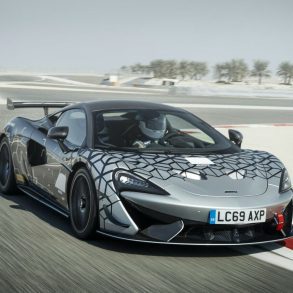
McLaren 620R Coupe
2019 - 2021
570S GT4 race car for the road. The car is basically a 570S GT4 race car for the road. It’s a limited-run coupe that McLaren will build only 350 of. The car is the most powerful of the Sports Series range. 612 hp and 457 lb-ft of torque. The car also gets the 570S GT4’s suspension and braking parts and many of the different adjustable aero components.

‘Racing Through The Ages’
2018
6 Cars. Themes celebrate McLaren’s racing history. Featuring a 570S Coupe and 570S Spider in each theme for a total of six cars. Features three: Muriwai, which celebrates Bruce McLaren’s early racing exploits in New Zealand; Papaya Spark, which honours victories in orange during the ’60s and 70s; and lastly, Sarthe Grey, inspired by McLaren’s Le Mans victory.

McLaren 570GT MSO Cabbeen
2019
6 Cars. McLaren built the 570GT MSO Cabbeen Collection as a China-only model. The company made five of the cars that appeared at the 2018 Beijing Auto Show in China. Now, there is a sixth car that made its American debut at the Lunar New Year: Year of the Pig celebration in Los Angeles. McLaren Special Operations and Mr. Cabbeen.
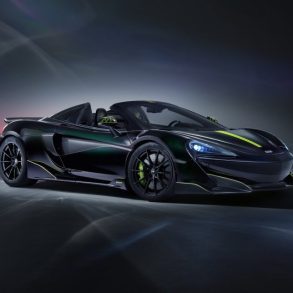
MSO 600LT Spider Segestria
2016
Only 12 made. The car is named after the Segestria florentina spider. the 600LT Spider Segestria Borealis borrows both of these colors. The paint is a deep gloss black with green flake embedded in it, and the pinstripes, the brake calipers, diffuser vanes, interior stitching, and body lines of the Spider are fluorescent green.
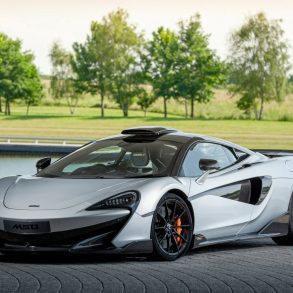
McLaren MSO 600LT Coupe
2019
Before McLaren says goodnight to the 600LT Coupe, the company decided to put out a special MSO version of it. McLaren London commissioned the car. The car features a carbon-fiber roof with a roof scoop, 10-spoke ultra-lightweight gloss black wheels, and orange brake calipers.
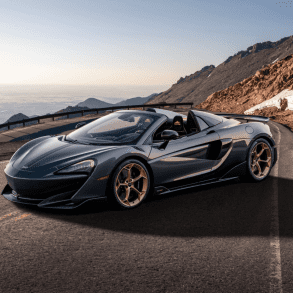
MSO 600LT (Pikes Peak)
2020
Six McLaren 600LT Spiders built by McLaren Special Operations for the Pikes Peak Collection. Each of the cars is unique and features MSO Bespoke or MSO Heritage paint. Colors include Black Gold, White Gold, Nerello Red, Volcano Red, Aurora Blue & Midas Grey.
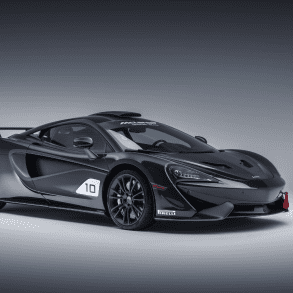
McLaren MSO X
2018
The MSO X is the result of applying as much 570S GT4 racing car thinking – and stripping-out – to a numberplate-wearing 570S as MSO can get away with. This is no mere application of a fixed rear wing, a McLaren F1-inspired roof snorkel, and some debatable paint schemes.
McLaren 720S
The McLaren 720S is a tour de force of supercar technology and design, representing the zenith of McLaren's Super Series. This masterpiece is renowned for its revolutionary approach to performance and aesthetics, blending a 710-horsepower 4.0-liter twin-turbo V8 engine with a state-of-the-art carbon fiber chassis. The result is a machine that not only accelerates from 0 to 60 mph in just 2.8 seconds but also boasts a top speed of 212 mph. It was the best supercar of the late 2010s, by far. McLaren introduced several notable variants, including the 720S GT3 and 720S GT3X for racing and the 765LT, the ultimate track+road monster.
McLaren 720S Variants
Production Models
McLaren 720S (2017 - 2023)
McLaren 720S Spider (2017 - 2023)
McLaren 765LT (2020 - 2023)
McLaren 765LT Spider (2021 - 2023)
Special Models
McLaren 720S Spider by MSO (2019)
McLaren 720S Apex (2019 - 2023)
McLaren 720S Le Mans (2020 - 2023)
McLaren 720S Spa 68 (2019)
McLaren 765LT Strata Theme (2022)
Daniel Ricciardo Edition 720S 2022)
Race Models
McLaren 720S GT3 (2018)
McLaren 720S GT3X (2021-2022)
McLaren 720S GT3 EVO (2023)
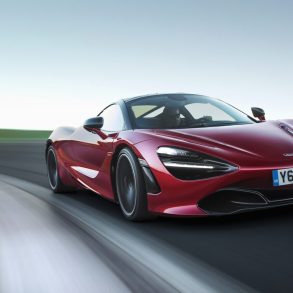
McLaren 720S Coupe
2017 - 2023
The Best Supercar on the Planet. The McLaren 720S is a sensational supercar, easily the best of the current breed. It has a twin-turbocharged 4.0-liter V-8 that produces 710 horsepower and 568 lb-ft of torque. It looks gorgeous too. Unrivaled chassis tuning, absurd amounts of speed, unparalleled acceleration numbers and a package that looks stunning.
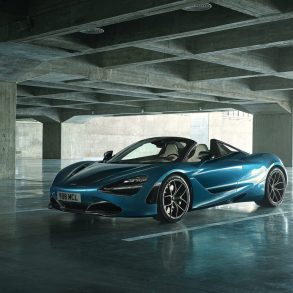
McLaren 720S Spider
2017 - 2023
Roadster Perfection. The latest iteration of the current 720S – monikered “Spider” is a convertible variant of the 720S which comes with a folding hard top. The Spider retains the same DNA as the Coupe. Thanks to its brilliant aero design, the Spider still achieves a remarkable top speed of 202 mph with the top folded. Nearly perfect convertible performance.
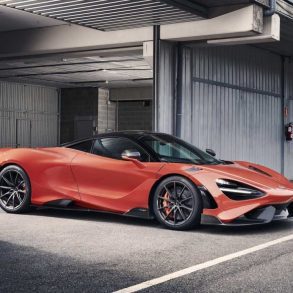
McLaren 765LT
2020 - 2023
Lives up the 765LT name. The 765LT replaces the 675LT as the newest limited-production track car. As with previous LT models, weight saving is the key focus for the 765LT, losing 160+lbs compared to the 720S. For the first time McLaren has also adjusted some of the 765LT’s inner workings too. This is peak McLaren and peak performance, an absolutely monster on road and track.
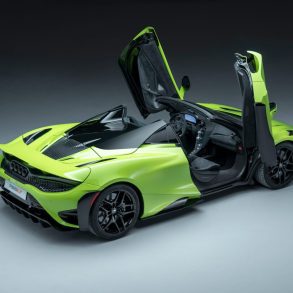
McLaren 765LT Spider
2021 - 2023
Meet the open-top variant of the 765LT. Like its coupe sibling, production will also be limited to 765 units. The car is powered by a twin-turbocharged V8 that's capable of hurtling the car to 124 mph in just 7.2 seconds. Turning the McLaren 765LT into the Spider only adds 49 kg to the overall weight of 1,388 kg and the spider retains most of the handling dynamics of the coupe.
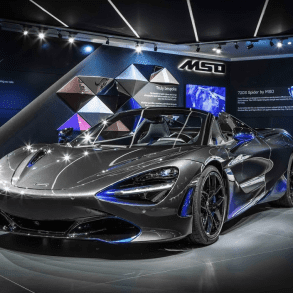
McLaren 720S Spider by MSO
2019
The 2019 McLaren 720S Spider by MSO (McLaren Special Operations) is a bespoke version of the already stunning 720S Spider, featuring unique aesthetic enhancements and custom finishes that elevate its exclusivity and craftsmanship, blending performance with personalized luxury.
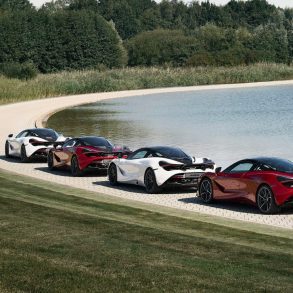
McLaren 720S MSO Apex
2019 - 2023
A group of cars designed to celebrate the high cornering speeds that McLaren cars have achieved at some of the most iconic corners at European racetracks. The corners? Eau Rouge, the Mobil 1 Kurve, the Abbey, the Signes and the Ascari Chicane (90 mph).
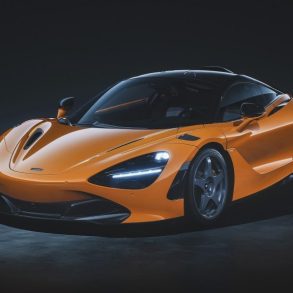
McLaren 720S Le Mans
2020 - 2023
The MSO X is the result of applying as much 570S GT4 racing car thinking – and stripping-out – to a numberplate-wearing 570S as MSO can get away with. This is no mere application of a fixed rear wing, a McLaren F1-inspired roof snorkel, and some debatable paint schemes.
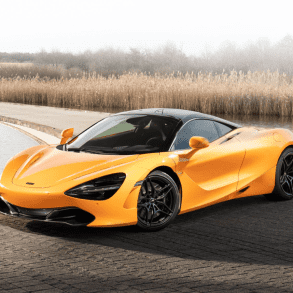
McLaren 720S Spa 68 Collection
2019
3 Cars. To commemorate 50 years since Bruce McLaren secured the first Grand Prix victory for McLaren, the company will build a limited edition 720S Spa 68 Collection. Brussels commissioned three of the cars. Feature a Bespoke Anniversary Orange paint job to match the car that won the 1968 Belgian Grand Prix.
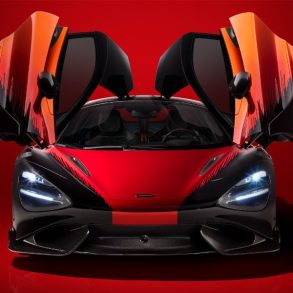
McLaren 765LT Strata Theme
2022
MSO claims they drained 450 hours into designing this paint scheme for the 765LT, decorating the car with skyline-inspired shapes and featuring their F1 colors with an Azores Orange rear end. Extras include painted brake calipers (Volcano Red in the rear, Azores Orance in the front) and Memphis Red interior accents.
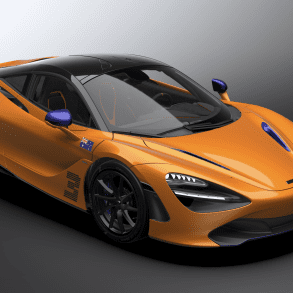
Daniel Ricciardo Edition 720S
2022
The Daniel Ricciardo Edition 720S features a striking Papaya Spark and Burton Blue livery – a nod to Ricciardo's 2021 McLaren F1 car. Unique design elements include carbon fiber sills inscribed with Ricciardo's signature, his race number "3" etched into the doors, and a "One of Three" commemorative plaque.
McLaren Senna
The McLaren Senna is a marvel of modern engineering, a tribute to one of Formula 1's greatest drivers, Ayrton Senna, and an embodiment of the brand's racing spirit. Unveiled in 2018, this car is not just a testament to McLaren's legacy in motorsport but a showcase of how far road-legal track technology has come. Designed to deliver the most intense circuit experience without sacrificing street legality, the McLaren Senna is a rare convergence of extreme performance and cutting-edge automotive technology. This article explores the McLaren Senna in depth, from its inspiration and design to its performance capabilities and impact on the automotive world.
McLaren Senna Variants
Production Models
McLaren Senna (2018 - 2020)
McLaren Senna GTR (2018 - 2020)
Special Models
McLaren Senna XP Special (2020)
McLaren Sabre by MSO (2021)
McLaren Senna GTR LM (2020)
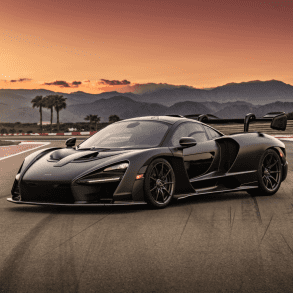
McLaren Senna
2018 - 2020
Lap Record Destroyer. Named after Formula 1 driver Ayrton Senna, the McLaren Senna is a track-focused hypercar. Its aggressive appearance tells you immediately that this thing is designed to destroy lap times. The McLaren Senna is the fastest McLaren road car ever around a racetrack, with downforce numbers up there with proper race cars. An absolute monster of a machine.
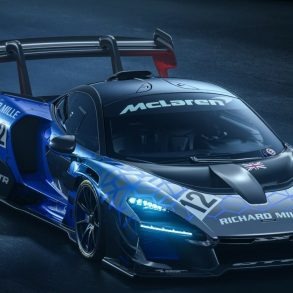
McLaren Senna GTR
2018 - 2020
A more hardcore Senna (if thats even possible). Track-focused update to the McLaren hypercar, the Senna. Freed from all road and motorsport rules, it pushes things to the max. Pared-back, pumped-up then unleashed for track use only… it is, simply put, ferocious. Try 1000kg of downforce and a power to weight ratio of 684 horsepower per tonne. This is a serious track-only car.

McLaren Senna GTR LM
2020
The Special Operations department built the McLaren Senna GTR LM, the road-legal iteration of the trackday-only Senna GTR, online on September 17, 2020. It is not to be confused with the standard McLaren Senna LM. Only five units have been made, and each has a unique paint scheme reflecting the five McLaren F1 GTRs at the 1995 24 Hours of Le Mans. Celebrate the 25th anniversary of win at LeMans.
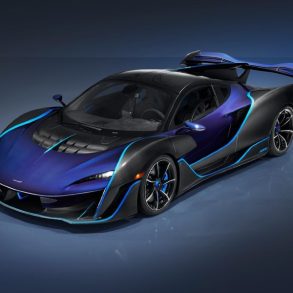
McLaren Sabre
2021
McLaren Special Operations’ bespoke division has produced 15 cars exclusively for U.S customers. The McLaren Sabre is powered by an 824-hp, 590ft-lb torque, twin-turbo V-8, which happens to be the most powerful non-hybrid engine to date. McLaren has claimed a top speed of 218-mph (350kph) with the Sabre. McLaren is not sharing any other specifications at this time.
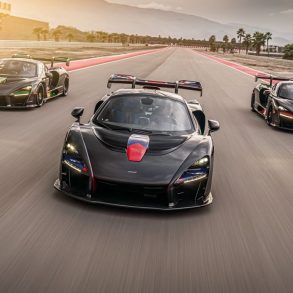
McLaren Senna XP Specials
2020
McLaren Senna XP Special Editions are a trio of ultra-rare and bespoke hypercars crafted by McLaren Beverly Hills in collaboration with McLaren Special Operations (MSO). Inspired by Ayrton Senna's legendary Formula 1 victories, each XP model sports unique paint schemes, intricate airbrushing referencing Senna's achievements, and customized interiors with flags and personal touches.
McLaren Speedtail
Where hypercar performance meets breathtaking form. This futuristic masterpiece rockets from 0 to 60 mph in a mind-numbing 2.8 seconds, its teardrop design slicing through the air with unmatched efficiency. But the Speedtail isn't just about speed – it's a luxurious journey into the future of automotive artistry.
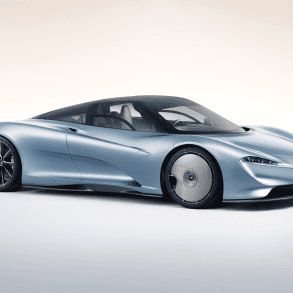
McLaren Speedtail
2020
250+mph Hybrid Hypercar. This is the successor to the McLaren F1 (including iconic 3-seat layout). The McLaren Speedtail is a limited-production hypercar (only 106 will be built). Whereas other McLaren’s blend handling, acceleration, top speed, and driving dynamics in a harmonious package, the Speedtail has a more singular focus. Their first ever Hyper-GT and most aero-efficient car ever.
McLaren Elva
Where hypercar performance meets breathtaking form. This futuristic masterpiece rockets from 0 to 60 mph in a mind-numbing 2.8 seconds, its teardrop design slicing through the air with unmatched efficiency. But the Speedtail isn't just about speed – it's a luxurious journey into the future of automotive artistry.
Production Models
McLaren Elva (2020)
Special Models
McLaren Elva M6A Theme (2020)
McLaren Elva M1A Theme (2020)
McLaren Elva Gulf Theme (2020)
McLaren Elva (Windscreen) (2021)
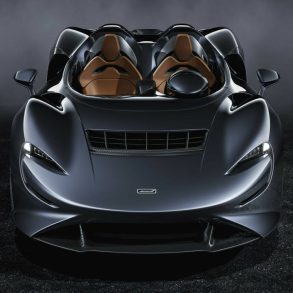
McLaren Elva
2020
Roofless Speedster Hypercar. The model is a completely roofless Speedster. It’s a familiar vehicle, but it’s also wildly unique. The car also gets a 4.0-liter twin-turbo V8 (same as the Senna). Makes 804 hp and 590 lb-ft of torque. The McLaren factory will build 399 Elvas after the last Speedtail has left the facility. Each of those cars will come with a £1.4million ($1.9 million) starting price (a lot more with options of course).

McLaren Elva M6A Theme by MSO
2020
The McLaren Elva M6A Theme by MSO pays tribute to the iconic 1967 Can-Am race car driven by Bruce McLaren. This special edition Elva is drenched in Anniversary Orange, mirroring the legendary racing color. A Dove Grey stripe, McLaren Cars decal, and Bruce McLaren's race number "4" further evoke the historic M6A. Satin carbon fiber elements and 10-spoke Diamond Cut wheels add a modern, edgy touch.
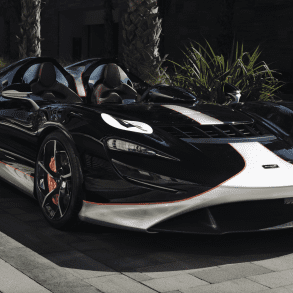
McLaren Elva M1A Theme by MSO
2020
Celebrates Bruce McLaren's groundbreaking M1A race car, which repeatedly smashed lap records at the Mosport Park track during the 1964 Canadian Sports Car Grand Prix. This Elva wears a Magnesium Silver racing stripe along its body, mirroring the livery of the original. An Accent Red pinstripe and full-body carbon fiber finish add a touch of aggression and modernity. Bruce McLaren's number "4" completes the design.
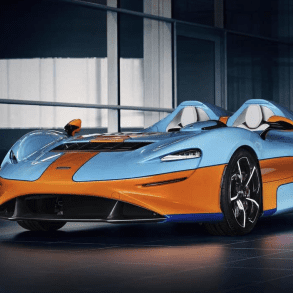
McLaren Elva Gulf Theme by MSO
2020
Elva Gulf Theme is a celebration of the historic partnership between McLaren and Gulf Oil. This special Elva shines in the iconic Gulf racing colors: a vibrant blue base with an orange racing stripe. The Gulf logo adorns its sides, evoking legendary cars that battled on the track in the 1960s and 70s. It doesn't just recreate the livery; there are details like matching blue brake calipers and orange seat accents.
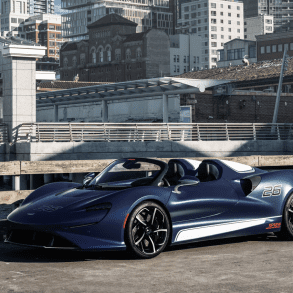
McLaren Elva with Windscreen
2021
McLaren built a limited number of Elvas with a windscreen for customers who wanted a slightly more practical and comfortable driving experience. This optional windscreen dramatically alters the car's appearance, enclosing the open cockpit and offering a physical barrier against the wind. While still not as weatherproof as a traditional car, the windscreen adds a touch of everyday usability to the Elva.
Mercedes-McLaren SLR
The Mercedes-Benz McLaren SLR was developed jointly by Mercedes-Benz and McLaren. The SLR was sold between 2003 and 2010. At the time when the car was being developed, Mercedes-Benz had a 40 percent stake in the McLaren Group. The Mercedes-Benz McLaren SLR was offered both as a coupe and as a roadster. The two companies cooperated closely during the early days of 21st century Formula 1 racing. McLaren made the bodies of the race cars, Mercedes provided the dominant engines that powered them. The SLR was, oddly, a bit of the other way around, with McLaren only really providing the styling and carbon fiber work for the cars, while Mercedes built them. As well, Mercedes was responsible for the 5.4-liter supercharged V8.
SLR Variants
SLR McLaren (2003–2010)
SLR McLaren 722 (2007–2010)
SLR McLaren Roadster (2007–2010)
SLR McLaren Roadster 722S (2009–2010)
SLR McLaren 722 GT (2008)
SLR McLaren Stirling Moss (2009)
SLR McLaren Edition (2011-2013)
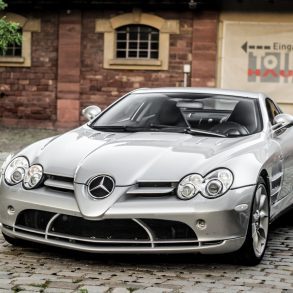
Mercedes-Benz SLR McLaren
2003 - 2010
The Mercedes-Benz SLR McLaren revives the glorious tradition of the SLR and marks the reawakening of Mercedes-Benz’ passion for super sports cars. Mercedes-Benz and its Formula 1 partner McLaren to showcase their collective experience in the development, construction and production of high-performance sports cars.
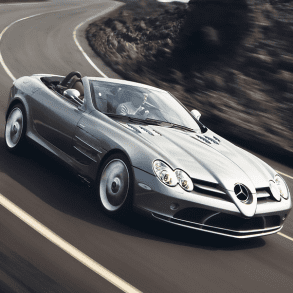
Mercedes-Benz SLR Roadster
2007 - 2010
The roadster version of the SLR came in 2007. Especially for the Roadster, complex carbon-fibre technology has been intelligently further developed for the monocoque chassis. The roof opens and closes semi-automatically in less than ten seconds. Performance was on-par with the coupe version and it was good for over 200 mph.
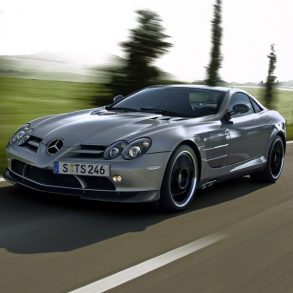
Mercedes-Benz SLR 722 Edition
2007 - 2010
A new version of the SLR was introduced in 2006, called the Mercedes-Benz SLR McLaren 722 Edition. The "722 Edition" got a upgraded good for 650 hp and 605 lb/ft of torque as well as more aggressive styling. A lower ride height, alloy wheels, modified suspension and stiffer dampers, to make better dynamically.
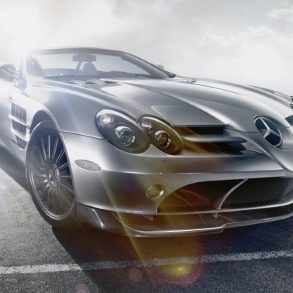
Mercedes-Benz SLR Roadster 722
2009 - 2010
The SLR McLaren Roadster 722 S got even more dynamic suspension tuning and improved aerodynamics. With an output of 478 kW/650 hp, acceleration from 0 to 100 km/h in 3.7 seconds and a top speed of 335 km/h, this open two-seater betters the standard set for open-air super-sports cars by the SLR McLaren Roadster.
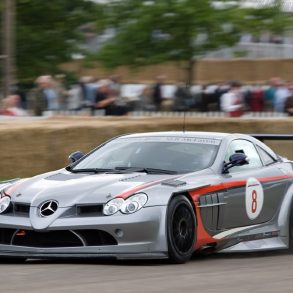
Mercedes-Benz SLR 722 GT
2008
Following repeated requests by motor racing enthusiasts among the SLR CLUB members, the British motor racing specialists RML Group (Ray Mallock Ltd) developed the SLR 722 GT. This was designed exclusively for the racetrack, has no approval for on-road use and took part in the SLR CLUB Trophy.

SLR McLaren Stirling Moss
2009
Named after the British racing driver of the same name, the SLR Stirling Moss is a limited edition variant. The car was designed by Korean designer Yoon Il-hun and was inspired by the 300 SLR race car. Production began in June 2009 and all 75 cars planned to be produced were completed by December 2009.
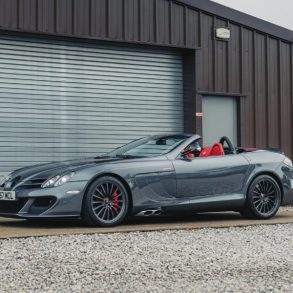
SLR - The McLaren Edition
2011 - 2013
Once the original run of McLaren Mercedes SLR’s were finished, and the special edition 722S‘s had also sold through, McLaren got together with Mercedes once more. This time, however, McLaren Special Operations were given free reign to develop their own edition of the SLR. What emerged was a run of 25 cars, tricked out by the MSO team.
McLaren Race Cars
McLaren is the second-oldest active Formula 1 team and if you have been following their race team for more than five seasons, they have actually been pretty successful at the sport, with some of the most iconic and successful Formula 1 cars ever made. The same goes for the short-lived, but exciting Can-Am race series. Can-Am was all McLaren, with the orange cars from Colnbrook notching up 38 victories, while privateer cars accounted for two more. Even in that final year of eclipse the works cars won twice and a private example once, bringing the final marque tally to an incredible 43. IndyCar was another race series McLaren dabbled in, first contesting the Indianapolis 500 race in 1970, encouraged by their tyre supplier Goodyear, which wanted to break competitor Firestone's stranglehold on the event. Perhaps the most interesting race series was McLaren taking their F1 and winning LeMans on their first attempt.
McLaren Formula One Cars
McLaren M2B (1966)
McLaren M4B (1967)
McLaren M5A (1967 - 1968)
McLaren M7A (1968 - 1971)
McLaren M7B (1969)
McLaren M7C (1969)
McLaren M7D (1970)
McLaren M9A (1969)
McLaren M14A (1970 - 1971)
McLaren M14D (1970)
McLaren M19A (1971)
McLaren M19C (1972 - 1973)
McLaren M23 (1973 - 1977)
McLaren M26 (1976 - 1978)
McLaren M28 (1979)
McLaren M29 (1979 - 1980)
McLaren M30 (1980)
McLaren MP4/1 (1981 - 1983)
McLaren MP4/2 (1984 - 1986)
McLaren MP4/3 (1987)
McLaren MP4/4 (1988)
McLaren MP4/5 (1989 - 1990)
McLaren MP4/6 (1991 - 1992)
McLaren MP4/7A (1992)
McLaren MP4/8 (1993)
McLaren MP4/9 (1994)
McLaren MP4/10 (1995)
McLaren MP4/11 (1996)
McLaren MP4/12 (1997)
McLaren MP4/13 (1998)
McLaren MP4/14 (1999)
McLaren MP4/15 (2000)
McLaren MP4-16 (2001)
McLaren MP4-17 (2002)
McLaren MP4-18 (2003)
McLaren MP4-19 (2004)
McLaren MP4-20 (2005)
McLaren MP4-21 (2006)
McLaren MP4-22 (2007)
McLaren MP4-23 (2008)
McLaren MP4-24 (2009)
McLaren MP4-25 (2010)
McLaren MP4-26 (2011)
McLaren MP4-27 (2012)
McLaren MP4-28 (2013)
McLaren MP4-29 (2014)
McLaren MP4-30 (2015)
McLaren MP4-31 (2016)
McLaren MCL32 (2017)
McLaren MCL33 (2018)
McLaren MCL34 (2019)
McLaren MCL35 (2020)
McLaren MCL35M (2021)
McLaren MCL36 (2022)
McLaren MCL60 (2023)
McLaren MCL38 (2024)
McLaren CanAm Cars
McLaren M1A (1964)
McLaren M1B (1966)
McLaren M1C (1967)
McLaren M6A (1967)
McLaren M6B (1968)
McLaren M8A (1968)
McLaren M8B (1969)
McLaren M8C (1968)
McLaren M8D (1970)
McLaren M8E (1971)
McLaren M8F (1971)
McLaren M20 (1972)
McLaren M8FP (1972)
McLaren LT170 (1971 - ASCC)
McLaren C8 (1971 - Not CanAm)
McLaren M12 (1968 - 1969)
McLaren IndyCars
McLaren M15A (1970)
McLaren M16A (1971)
McLaren M16B (1972)
McLaren M16C (1973)
McLaren M16E (1975-1976)
McLaren M24 (1977)
McLaren M24B (1978)
McLaren M29 (2017)
McLaren M29 (2019)
McLaren M29 (2020)
McLaren (2021)
McLaren (2022)
McLaren (2023)
McLaren (2024)
McLaren F1
McLaren F1 GTR (1995 - 1997)
McLaren F1 GTR Long Tail (1997)
McLaren Customer Race Cars
McLaren MP4-12C GT3 (2011)
McLaren MP4-12C Can-Am (2012)
McLaren MP4-12C GT Sprint (2013)
McLaren P1 GTR (2015 - 2016)
McLaren P1 GTR-18 (2020)
McLaren 650S Sprint (2015)
McLaren 650S GT3 (2015)
McLaren 570S GT4 (2016)
McLaren 570S Sprint (2016)
McLaren 720S GT3 (2018)
McLaren 720S GT3X (2021-2022)
McLaren 720S GT3 EVO (2023)
McLaren Artura Trophy (2022)
McLaren Artura GT4 (2022)
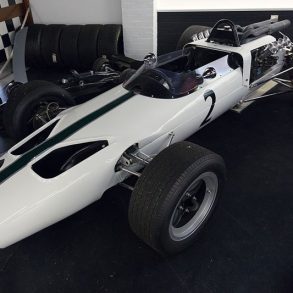
McLaren M2B
Season: 1966
The McLaren M2B was the McLaren team's first Formula One racing car, used during the 1966 season. Entering six races and starting only four. It scored the team's first point at the British Grand Prix and two more points at the United States Grand Prix.
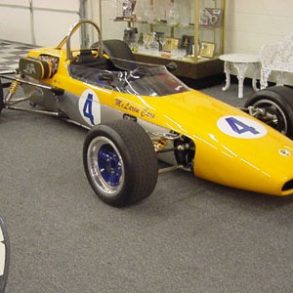
McLaren M4B
Season: 1967
Raced five times by Bruce McLaren in the 1967 season, the M4B was based on the M4A Formula 2 car as a stopgap between the M2B and the M5A. Additional fuel tanks were added either side of the cockpit to allow the car to run a full Grand Prix distance.
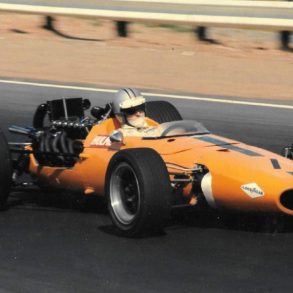
McLaren M5A
Season: 1967 - 1968
McLaren's first car build specifically for Formula One. In all it has eleven races for now wins. Swedish privateer Jo Bonnier bought the M5A and used it to take part in 7 more Grands Prix in 1968, as well as other races including the International Trophy..
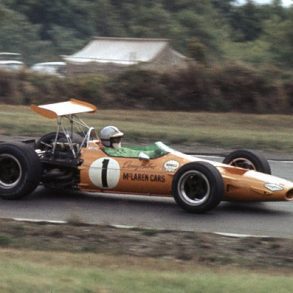
McLaren M7A
Season: 1968 - 1971
The McLaren M7A was a pivotal Formula One race car for Bruce McLaren's fledgling team. Designed by Robin Herd and Gordon Coppuck, the M7A marked a shift towards simplicity and featured the legendary Ford-Cosworth DFV engine.
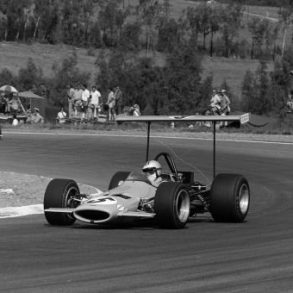
McLaren M7B
Season: 1969
The M7B was a one-off conversion of an M7A chassis with the fuel stored low and centrally in integral tanks at the sides of the cockpit. This was another result of Bruce McLaren's theory about improving the car's handling by altering fuel distribution.
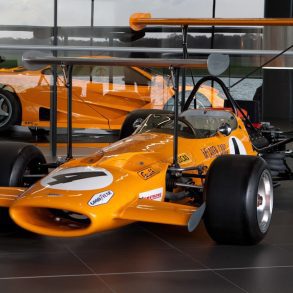
McLaren M7C
Season: 1969
The chief distinguishing characteristic of M7C was its fully enclosed monocoque which gave greater torsional rigidity than the bathtub chassis.
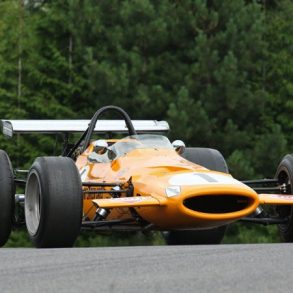
McLaren M7D
Season: 1970
The M7D was commissioned by Alfa Romeo's Autodelta competition department and was powered by a 3.0 litre V8 engine from Alfa Romeo's T33 sports car. Its record in F1 was pretty horrible.
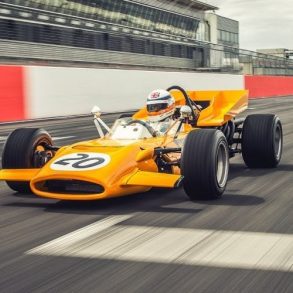
Mclaren M9A
Season: 1969
Like Lotus and Matra, McLaren built a four-wheel-drive F1 car for 1969, the McLaren M9A, but the car was only raced once and then put aside. The car, complete with distinctive "tea tray" rear wing, was completed in time for use in the British Grand Prix.
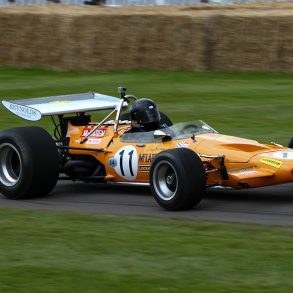
McLaren M14A
Season: 1970 - 1971
The M14A was an evolution of the previous M7A and M7C, with the primary change being the rear brakes were mounted inboard instead of outboard. As with the M7, the M14A was powered by a Cosworth DFV V8.
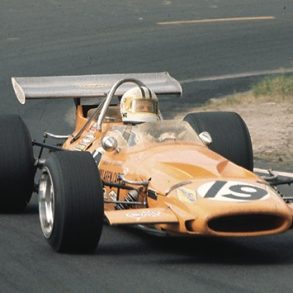
McLaren M14D
Season: 1970
Like the M7D, the M14D was commissioned by Alfa Romeo's Autodelta competition department. It was a standard M14A powered by the 3.0 litre V8 engine from Alfa Romeo's T33 sports car.
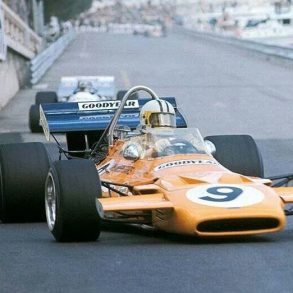
McLaren M19A
Season: 1971
Nicknamed "The Alligator Car" thanks to the two fuel tanks next to the driver, the M19A used inboard coilover shocks for the front and rear suspension. Used a mid-mounted Cosworth DFV V8.
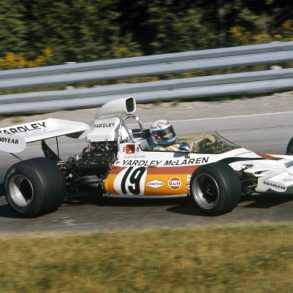
McLaren M19C
Season: 1972 - 1973
The modified M19C made its debut at Monaco in the hands of Denny Hulme (Revson/Redman kept the M19A until the Austrian Grand Prix). The swinging link connection was dropped in favor of a conventional system in the M19C.
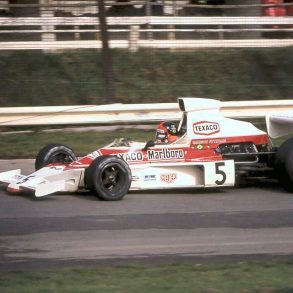
McLaren M23
Season: 1973 - 1977
The M23 was a development of the McLaren M16 Indianapolis 500 car. A Ford Cosworth DFV engine was used and in the hands of Nicholson-McLaren Engines it made around 490 bhp. Over 83 races it had 14 poles, 16 wins, 2 drivers' championships and 1 constructors championship.
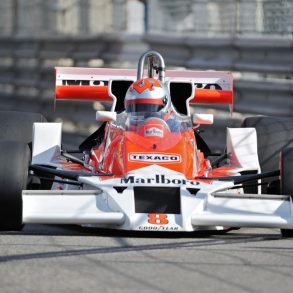
McLaren M26
Season: 1976 - 1978
One of the key objectives when designing the new M26 Formula 1 racer was to reduce the frontal area compared to the outgoing M23. As a result, the aluminium monocoque chassis was lower and narrower than before. The rest of the mechanical package was carried over from M23.
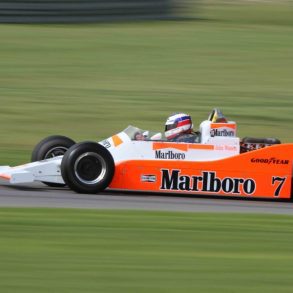
McLaren M28
Season: 1979
The first ground effect McLaren was ready late in 1978, which allowed the team to submit the M28 to extensive tests before it made its competition debut in Argentina. Despite a third place in that first racem, the M28 only served McLaren for just half a season.
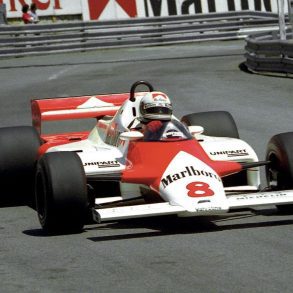
McLaren M29
Season: 1979 - 1980
McLaren went back to conventional sheet aluminium for the chassis of the M29. Its design was clearly inspired by the Williams FW07 and Ligier JS11 that had shown great speed early in 1979 season. Better than the M28 it still wasn't good enough to be truly competitive in terms of winning.
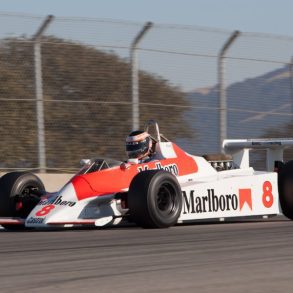
McLaren M30
Season: 1980
The McLaren M30 was raced during the 1980 Formula One season and only one example was created. The M29 had become obsolete and a new vehicle was needed. The result was the M30 which further capitalized on ground-effect design. The M30 was raced to a sixth place finish at the Dutch Grand Prix, followed by a 7th at the Italian Grand Prix.
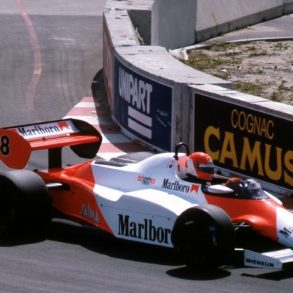
McLaren MP4/1
Season: 1981 - 1983
Groundbreaking. This was the first Formula One car to use a monocoque chassis wholly manufactured from carbon fibre composite, a concept which is now ubiquitous. The MP4 was the first car to be built following the merger of the McLaren team and Ron Dennis team. The car had several updates known as the MP4B, MP4/1C, MP4/1E
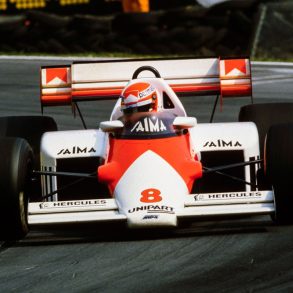
McLaren MP4/2
Season: 1984 - 1986
Everything learned from the interim MP4/1E was incorporated into the MP4/2. The car shared a lot with the MP4/1 E, but the monocoque was redesigned to accommodate the shorter engine and the larger fuel cell. An iteration of it, the MP4/2B, was used in the 1985 season, and a slightly updated version, the MP4/2C, raced in the 1986 season for McLaren.
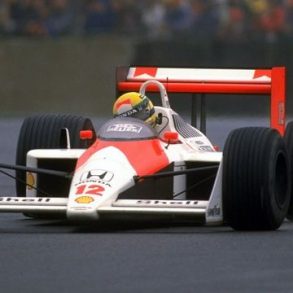
McLaren MP4/3
Season: 1987
There were three wins in 1987 with the MP4/3 by Alain Prost at Grand Prix of Brazil, Belgium, and Portugal. Stefan Johansson managed a few podium places, but he would be replaced in 1988 by Ayrton Senna. The MP4/3 represented the pinnacle of the development of the McLaren TAG-Porsche partnership.
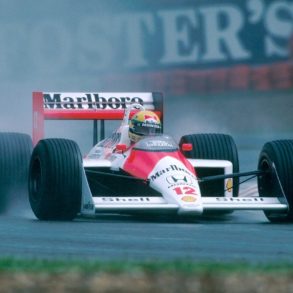
McLaren MP4/4
Season: 1988
The McLaren-Honda MP4-4, is one of the most successful Formula One car designs of all time. It competed in the 1988 Formula One season. The car was powered by Honda's RA168E 1.5 litre V6 turbo engine. The team achieved 15 pole positions to go along with the 15 wins. Only Gerhard Berger's pole position at Silverstone prevented a perfect pole record for McLaren.
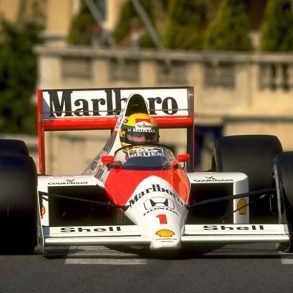
McLaren MP4/5
Season: 1989 - 1990
The MP4/5 was loosely based on its 1988 predecessor, the all-conquering MP4/4. McLaren used the new car for half of the 1989 season using the Weismann Longitudinal Transmission from the MP4/4, and the MP4/5B with the Weismann Transverse Transmission for the last half of the 1989 season and for 1990.
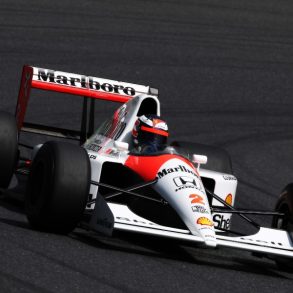
McLaren MP4/6
Season: 1991 - 1992
This was Honda's third engine configuration in just four seasons, and was an entirely new 60˚ unit with a greater piston area than the outgoing engine and a potentially higher rev limit. The car itself, whilst looking similar to MP4/5B, was quite different in terms of its aerodynamic profile. Considered the most competitive car in F1 til Williams sorted the FW14.
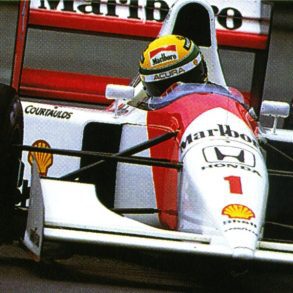
McLaren MP4/7A
Season: 1992
This was a follow-up to the successful MP4/6 from 1991. With Williams getting faster and more reliable, Mclaren was finally being tested. McLaren used the MP4/6 chassis, now designated MP4/6B for the first two races of 1992. It had semi-auto transmission and it was the last McLaren to use the Japanese engines from Honda (till 2015)
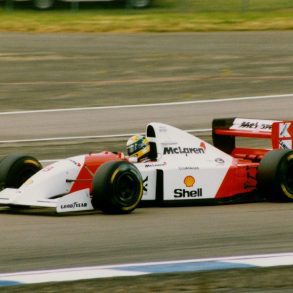
McLaren MP4/8
Season: 1993
This was a big leap in tech. Designed by Neil Oatley around advanced electronics technology, including a semi-automatic transmission, active suspension and traction control systems that were developed in conjunction with McLaren shareholder Techniques d'Avant Garde (TAG). The engine was a 3.5-litre Ford HBD7 V8 engine. Won five races with one pole.
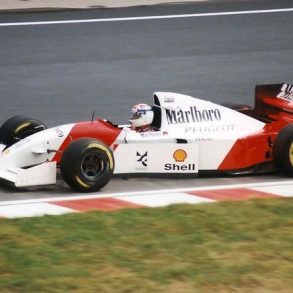
McLaren MP4/9
Season: 1994
Due to changes in regulations intended to return emphasis on driver skills, many technologies designed to aid the driver, such as active suspension, power-assisted brakes, ABS and traction control were no longer permitted. Visually the car was otherwise very similar to the preceding MP4/8. McLaren had zero wins, zero poles and eight podiums.
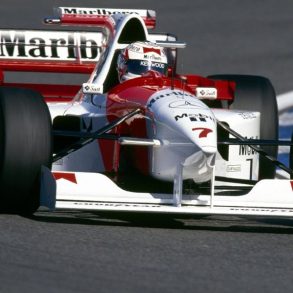
McLaren MP4/10
Season: 1995
The MP4/10 was a radical design, incorporating a high "needle"-nose design and a wing mounted atop the airbox, among other innovations. The car has a big handling problem thanks to a lack of front-end grip. Coupled with an often unreliable engine, it was not good enough to win, sitting behind Benetton, Williams and Ferrari.
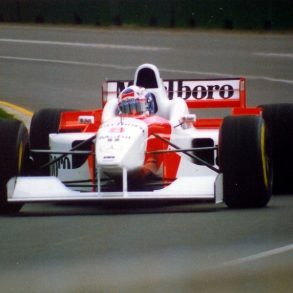
McLaren MP4/11
Season: 1996
Performance and reliability improved in 1996, but the McLaren still wasn't close enough to Williams, Ferrari and Benetton. The car was developed throughout the season, with improvements initiated to eradicate an initial handling imbalance. The changes were good enough for fourth in the constructors championship.
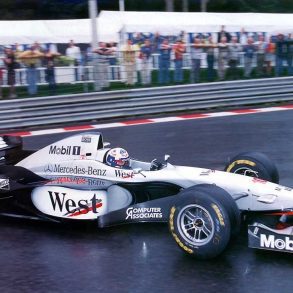
McLaren MP4/12
Season: 1997
New team colors arrived and lots of wind-tunnel testing helped McLaren improve. With a new F-spec version of the Mercedes-Benz engine, the cars were by this time enjoying a field-leading 740bhp at 16,000rpm, but even this proved insufficient to push McLaren’s tally of wins for the season beyond three.
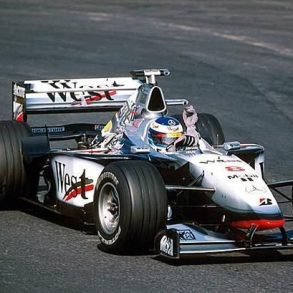
McLaren MP4/13
Season: 1998
From a base of three race wins in 1997, the team went on to win yet another Drivers‘ and Constructors‘ World Championship double, and its first with Mercedes-Benz and West. Performed exceptionally well although DC experienced a couple of bottom-end failures at Monza and Monaco while Hakkinen’s handling went in Budapest.
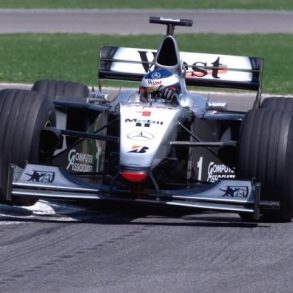
McLaren MP4/14
Season: 1999
The MP4/14 was the fastest car of the season, with aerodynamics that were even more advanced than the previous year's all-conquering MP4/13, while the Mercedes engine remained the most powerful on the grid. However, serious reliability problems, as well as errors by the drivers, meant that the Constructors' Championship was won by Ferrari.
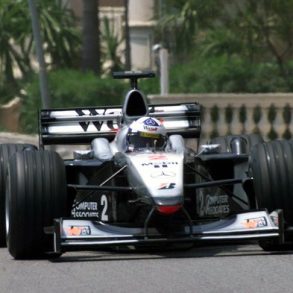
McLaren MP4/15
Season: 2000
The new MP4-15 was more an evolution than a new car, but with continual changes to the aerodynamics and a new power-steering set-up coming on stream during the season. The car proved highly competitive and scored seven victories just like its predecessor the MP4/14, but was narrowly beaten to both the championships by Ferrari.
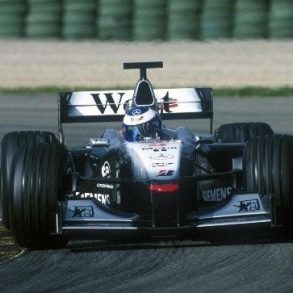
McLaren MP4-16
Season: 2001
After being narrowly pipped to both titles in 2000 by Ferrari, the aim of 2001 was to get McLaren back on top. However, the season proved to be frustrating. The team regarded themselves as fortunate to come second in the Constructors' Championship, with 102 points, ahead of the resurgent Williams team.
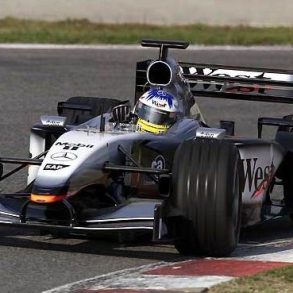
McLaren MP4-17
Season: 2002
Using a development version of the car, the MP4-17D, the 2003 season started very promisingly with wins at the first two grands prix of the year, one each for Coulthard and Räikkönen. Rival teams caught up as McLaren was sidetracked by the development of the MP4-18, which had reliability problems never raced.
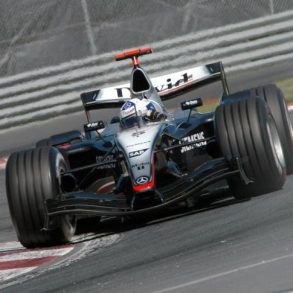
McLaren MP4-18
Season: 2003
The McLaren MP4-18 was a stillborn car. Ron Dennis decided a radical approach was needed to get back to the front. However, due to several problems during tests, the car was never raced, in favour of the McLaren MP4-17D, a highly developed version of the 2002 contender.
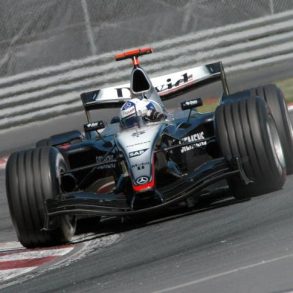
McLaren MP4-19
Season: 2004
McLaren said the MP4-19 was a "debugged version" of the ill-fated McLaren MP4-18. Turned out it still wasn't good enough. It was so bad that by mid-season a new car, the MP4-19B, was required, an all-new car with a radically redesigned aerodynamic package. The results were positive and gave team hope.
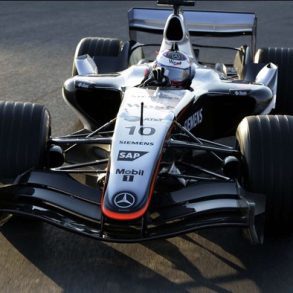
McLaren MP4-20
Season: 2005
The McLaren MP4-20 incorporated all of the lessons that had been learned, from the MP4-18 and from the two iterations of the MP4-19. Newey believed that downforce had been cut by as much as 28 per cent, the suspension geometry was also revised, and there was a new version of the Mercedes-Benz V10. Continual development made the MP4-20 the fastest car in F1 from mid-season on.
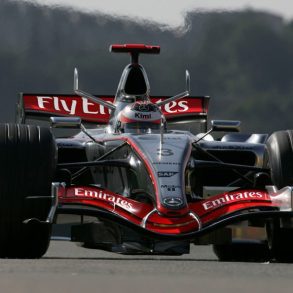
McLaren MP4-21
Season: 2006
The MP4-21 was the first McLaren car to be powered by purely Mercedes-Benz engines after 11 years partnership with Ilmor as an engine builder. Notable for its striking chrome livery with red stripes designed to maximize the visibility of the team's new primary sponsor Emirates. The distinctive needle-nose design was previously used on the MP4-19 in 2004. Zero wins.
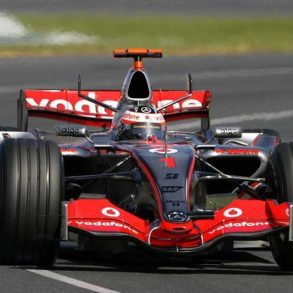
McLaren MP4-22
Season: 2007
The car proved to be one of the most competitive of the season, achieving eight victories. Internal infighting was the bigger story at McLaren. The low downforce package of the MP4-22 was extremely competitive. McLaren, with the aid of their improved car, scored as many team points in the first half of 2007 as they had done during the entire year in 2006.
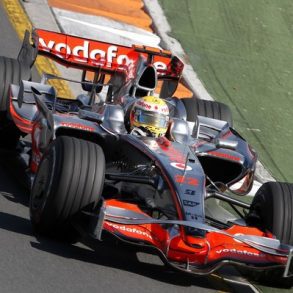
McLaren MP4-23
Season: 2008
The MP4-23 It represented a substantial evolution of the MP4-22. The latest version of the 2.4-litre, eight-cylinder Mercedes-Benz F0 108V, a 90° unit conforming to the FIA-mandated 19,000rpm. Revisions from the MP4-22 included a longer wheelbase, the removal of the "bullhorn" winglets from the airbox and a new rear wing which differed. It won six races.
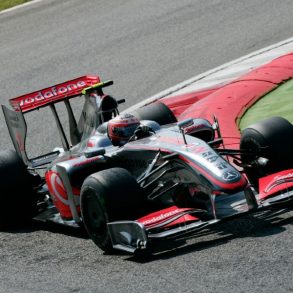
McLaren MP4-24
Season: 2009
How bad was the MP4-24? Lewis Hamilton had made public calls to scrap the car and former team owner turned commentator Eddie Jordan had proclaimed it as "possibly the worst car McLaren have ever designed". Only two wins and five podiums (thanks more to Hamilton's talent than anything else), the MP4-24 was not McLaren's best.
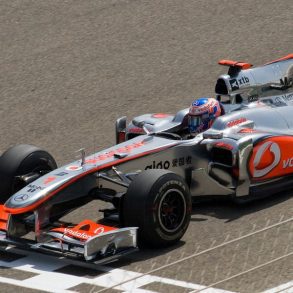
McLaren MP4-25
Season: 2010
The MP4-25 proved to be a stark improvement over the McLaren MP4-24. The most interesting part of the car was its F-duct, a small "snorkel" air scoop mounted in front of the driver that channels air through a duct in the cockpit and towards the rear of the car. Changes in the duct reduced drag and allowing as much as an extra 6 mph. Wins 5 races and 16 podiums.
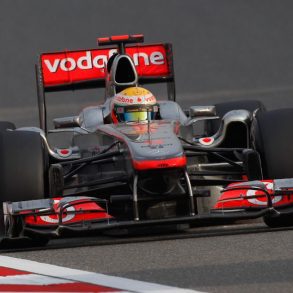
McLaren MP4-26
Season: 2011
The car was noted for its unique "L-shaped" sidepod arrangement, the aim is to clean up and better direct the airflow to the beam wing at the rear of the car, an area now even more important thanks to the ban on double diffusers. The car was competitive enough to give McLaren the 2nd place in the Constructors championship for the year.
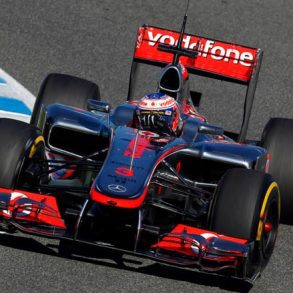
McLaren MP4-27
Season: 2012
The deep-reaching technical update for the 2012 McLaren MP4-27 showcased a natural evolution of 2011’s six-race-winning car. The 2012 chassis was substantially revised from the ground-up, with all major systems updated or re-designed for the new season. Good for seven wins and second once again in the Contructors Championship.
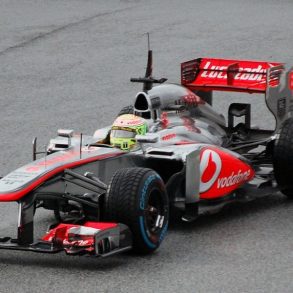
McLaren MP4-28
Season: 2013
The MP4-28 resulted in McLaren's worst Formula 1 performance for 33 years. It was their first season without finishing on the podium since 1980, and they never qualified in the top five - their worst since 1983. It was also the team's first season without a win since 2006
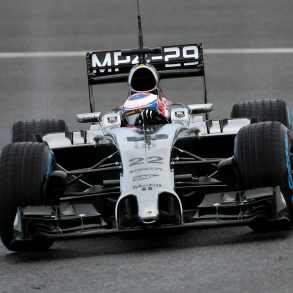
McLaren MP4-29
Season: 2014
The MP4-29 was McLaren's first turbo-powered Formula One car since the Honda engined MP4/4. After a third place finish in Australia, things went downhill. The team failed to record another podium finish all season.
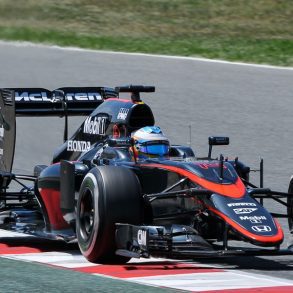
McLaren MP4-30
Season: 2015
The second Honda era was not like the first. The new Honda engine quickly proved both down on power and unreliable. The partnership scored its first world championship points at the Monaco Grand Prix, when Jenson Button finished eighth. Points were in short supply.
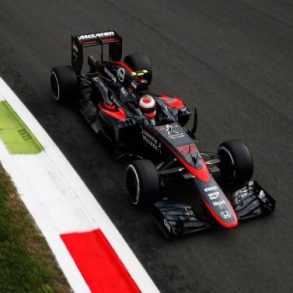
McLaren MP4-31
Season: 2016
The MP4-31 used the Honda RA616H power unit, the second engine developed by Honda since their return to the sport with McLaren in 2015. Most of the season was spent wishing and dragging the cars into Q2 for qualifying. Progress has clearly been made to the Honda.
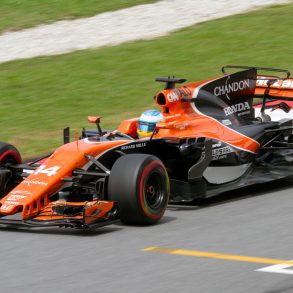
McLaren MCL32
Season: 2017
The MCL32 made its competitive début at the 2017 Australian Grand Prix. This was the last McLaren car to be fitted with a Honda engine as it was replaced by Renault engines from the 2018 season onwards. After an improvement in the previous year, 2017 was a rough season for McLaren. The cars were slow and the team's Honda engines proved to be very unreliable and slow. McLaren finished 9th in the Constructors' Championship.
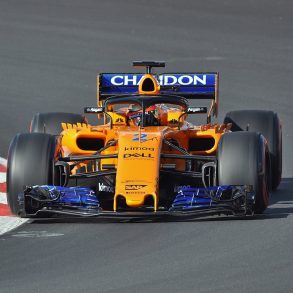
McLaren MCL33
Season: 2018
After criticising their engine supplier in the previous seasons, a switch to Renault engines in 2018 exposed issues with the McLaren chassis. The car could manage just two top 10 qualifying times throughout the season. The team finished sixth in the constructors' championship and that was only thanks to better reliability from the previous year, and the team greatly benefitted from their rivals' problems to score points from the early races.
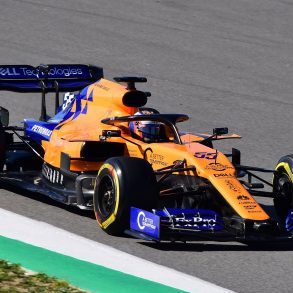
McLaren MCL34
Season: 2019
With a third place finish in the 2019 season, things are looking up for McLaren. The car is considered to be a big improvement compared to its disappointing predecessor, the MCL33, considered by many the best of the rest in qualifying and race trim behind the three leading teams: Mercedes, Ferrari and Red Bull. McLaren quickly recovered from an unlucky first few rounds to claim best of the rest with one race remaining.
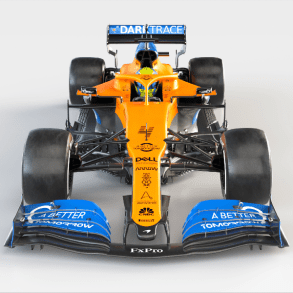
McLaren MCL35
Season: 2020
The MCL35 made its début at the 2020 Austrian Grand Prix after the start of the season was delayed by the COVID-19 pandemic. The MCL35 was driven by Carlos Sainz Jr. and Lando Norris in 2020, with McLaren finishing in third place in the World Constructors' Championship for the first time since 2012 and achieving two podiums. The same car is basically being used for the 2021 season.
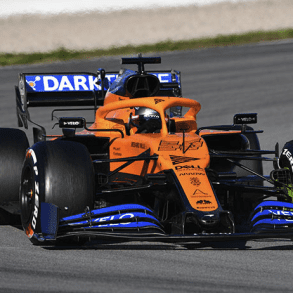
McLaren MCL35M
Season: 2021
The 2021 MCL35M, powered by a Mercedes engine, laid the groundwork with a reliable chassis but lacked the aggressive engine packaging seen on some rivals. The MCL35M struggled to consistently challenge the top teams.
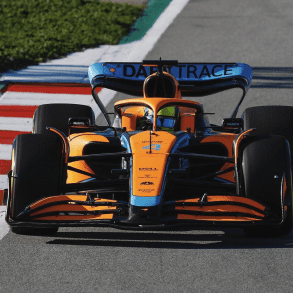
McLaren MCL36
Season: 2022
The 2022 MCL36 addressed this by adopting a revised design with a unique suspension layout, although it retained the Mercedes powerplant. The MCL36 struggled to consistently challenge the top teams.
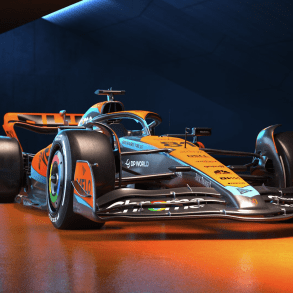
McLaren MCL60
Season: 2023
A significant shift came in 2023 with the MCL60, marking McLaren's 60th anniversary. This car aimed to propel the team back into the top four. While details are scarce, it likely featured significant aerodynamic upgrades and further refinement.
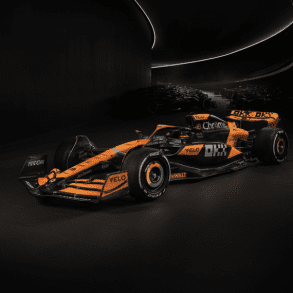
McLaren MCL38
Season: 2024
The McLaren MCL38 is a Formula One car constructed by McLaren under the direction of Rob Marshall to compete in the F1 for 2024 F1. Driven by Lando Norris and Oscar Piastri, for their 6th and 2nd seasons respectively.
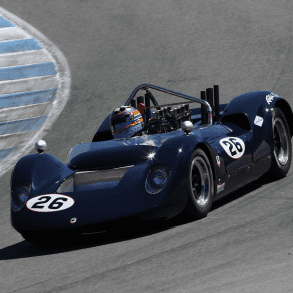
McLaren M1A
Season: 1964
Building on the success of the ‘Zerex Special’, Mclaren made a production run of Group 7 racecars known as the McLaren Mark 1 or M1A. Spaceframe chassis and tuned aluminum Oldsmobile V8.
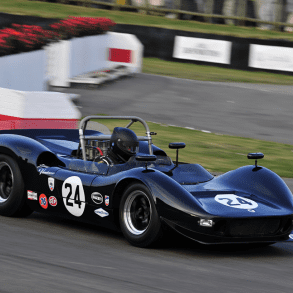
McLaren M1B
Season: 1966
In 1965, McLaren introduced the M1B for Group 7 (and later, Can-Am) competition. The M1B was an evolution of its earlier M1A, and during Can-Am’s 1966 debut season it would deliver lessons for later dominance.
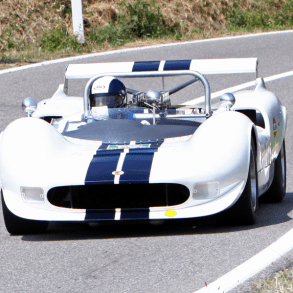
McLaren M1C
Season: 1967
The McLaren M1C was the final development of the M1 and total of 25 M1C’s were produced with most of the cars ending up in the USA or Canada for the Can-Am challenge. M1C was introduced in 1967 as a customer car.
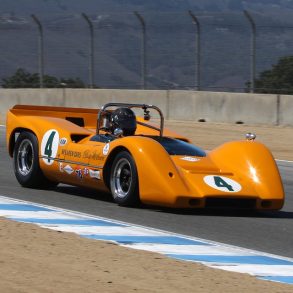
McLaren M6A
Season: 1967
The M6A started McLaren’s dominance of Can-Am, winning five out of the six rounds in 1967. It had a monocoque chassis and aerodynamic glass-fibre body. Power was from by 6.0-litre Chevy V8 with 530bhp.
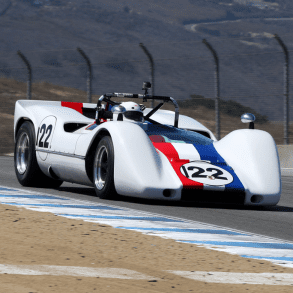
McLaren M6B
Season: 1968
Initially built with an Oldsmobile V8, it was re-engined with a more powerful Chevrolet unit for the first season of Can-Am in 1966. It was still some way off the outrageous pace of the monstrous McLaren race cars that were to come.
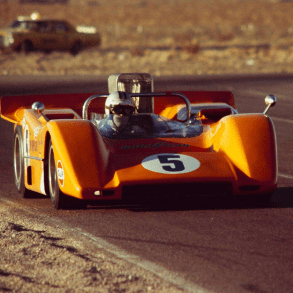
McLaren M8A
Season: 1968
The M8A was an evolution of the previous M6A design. The engine now had 7.0 litres of swept capacity, produced 620bhp and had become a stressed component within the chassis, increasing torsional stiffness and saving weight.
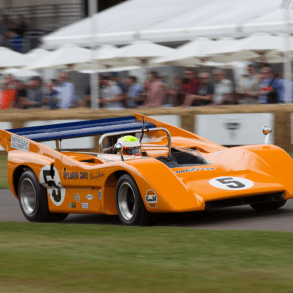
McLaren M8B
Season: 1969
The biggest visual difference between the M8A and M8B was the addition of the massive aerofoil wing at the back. The 1969 engine a 7.1-litre Chevrolet V8 producing 680bhp. It completely dominated the 1969 Can-Am season.
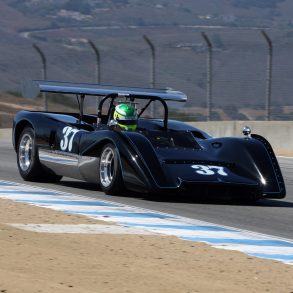
McLaren M8C
Season: 1968
The M8C was developed as a customer version of the M8A. Fifteen M8Cs were built by Trojan. They featured a more conventional chassis that did not use the engine as a stressed member. Customers chose their own engines.
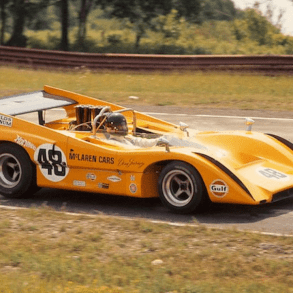
McLaren M8D
Season: 1970
Bruce McLaren died in pre-season testing of the M8D. The car won nine out of 10 rounds and the entire Can-Am championship. It had the nickname ‘Batmobile’. 7.6-litre Chevrolet V8 with 680bhp.
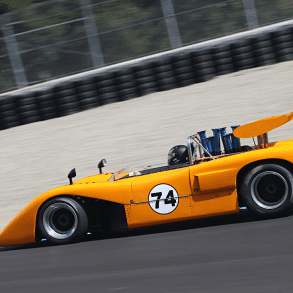
McLaren M8E
Season: 1971
The M8E was a customer car based on the M8B and built by Trojan. The high pylon-mounted rear wings of the M8B were replaced with a lower wing to comply with the ban on high-mounted wings.
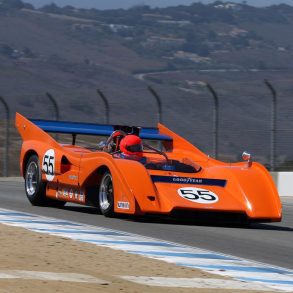
McLaren M8F
Season: 1971
Auminium V8 increased in size to well over 8 litres. Power was no 740 bhp, making the M8F the first Can-Am to break the 1000 bhp/ton. The last of McLaren’s astonishing run of winning cars.
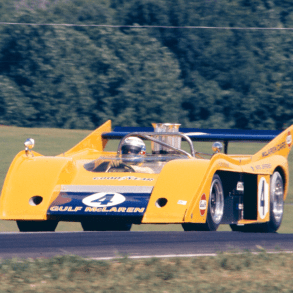
McLaren M20
Season: 1972
Developed for the 1972 season, served as a replacement for the M8Fs, but it later became the final Can-Am created by McLaren before they left series after failing to win the 1972 championship.
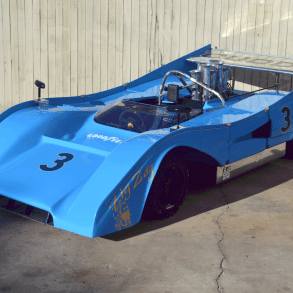
McLaren M8FP
Season: 1972
The M8FP was the Trojan-built customer version of the M8F. Trojan production cars for Can-Am were M8FP models in 1972.
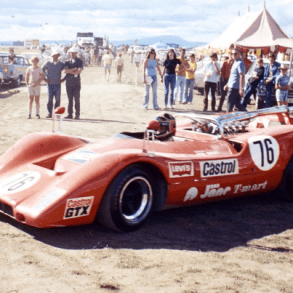
McLaren LT170
Season: 1971 (ASCC)
The LT170 was a hybrid of the Lola T70 and McLaren M6B Can-Am cars, and used a Chevrolet V8 engine. One car was built. This car raced part way through the 1971 Australian Sports Car Championship (ASCC).
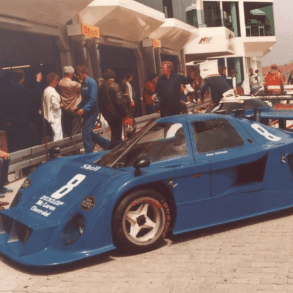
McLaren C8
Season: 1971
Starting out life as a 1972 McLaren M8F, the C8 used a 454 cu in (7,440 cc) Chevrolet V8 engine, but proved to be fragile, often retiring from races Peter Hoffmann owned the sole C8, and ran it until 1999.
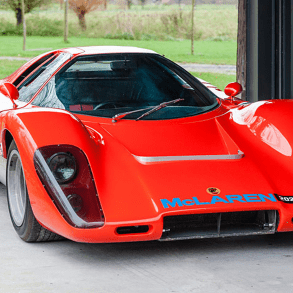
McLaren M12
Season: 1968-69
The M12s were intended as McLaren’s first customer cars based on the M8As which the team had successfully used to win the 1968 Can-Am season, as well as the M8Bs which were developing for 1969.
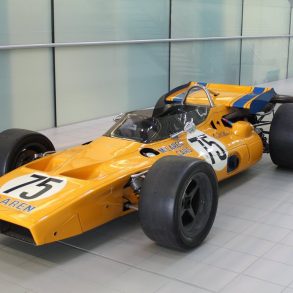
McLaren M15A
Season: 1970
McLaren's first Indy car, the McLaren M15. The car was very light by Indy standards, weighing in at 1350 lbs when first built (gained 100 lbs during development). It was the lightest cars at the 1970 Indy 500.
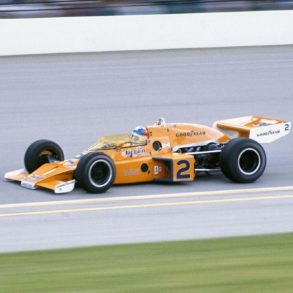
McLaren M16A
Season: 1971
This is the wedge shaped Indianapolis car for 1971 using the turbo charged Offenhauser engine and a Hewland LG500 4 speed. The Chassis is aluminium monocoque with 75 gallon fuel bags and fibreglass body.

McLaren M16B
Season: 1972
1972 Indianapolis/USAC cars developed from the M16A. These cars were built at Colnbrook in the UK and campaigned by the McLaren team and the Penske team.
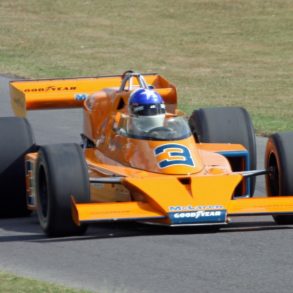
McLaren M16C
Season: 1973
The McLaren M16C was the most successful of the M16 variants, with works driver Johnny Rutherford winning eight races in M16Cs, including both the Indianapolis 500 and the Pocono 500 in 1974.
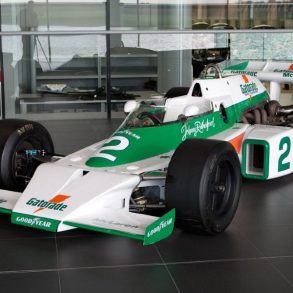
McLaren M16E
Season: 1975 - 1976
McLaren built six revised M16Cs for 1973, for works and Penske use. By now rule makers USAC had basically said that anything goes as far as wings were concerned. The M16C looked a little more like an F1 machine than the previous car, with a full length engine cover, a new, more rounded cockpit surround.
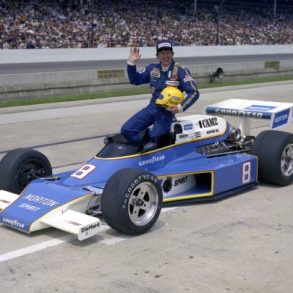
McLaren M24
Season: 1977
The M16 series had come to the end of its competitive life. It was superceded by the much more modern M24 for 1977. The M24 is basically an M23 with a turbo DFX instead of the NA DFV Cosworth, and of course the wheels are different sizes so the suspension is modified accordingly.
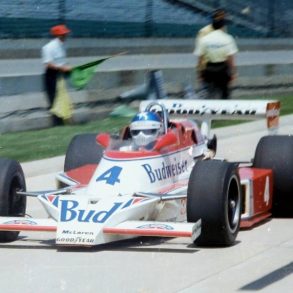
McLaren M24B
Season: 1978 - 1979
The McLaren M24B was built in 1978 and used during the 1978 and 1979 season. The 1979 CART season was marred by legal difficulties resulting from the USAC/CART split. Nevertheless, Rutherford and the M24B finished 4th in the Indy Car standings.
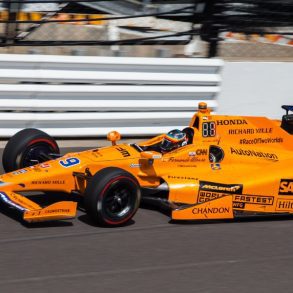
McLaren Indy (2017)
Season: 2017
Fernando Alonso and McLaren, decided to take on the 2017 Indy 500. He slowed and coasted to a smoky halt after completing 179 of the 200 laps. It was a great run, with Alonso having led 27 laps in total, between the frequent yellow flags, and he was classified 24th.
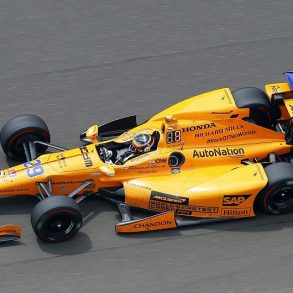
McLaren Indy (2019)
Season: 2019
McLaren's 2019 IndyCar went from a planned full-season with proven champions targeted as Fernando Alonso's team-mates, to failing to qualify for a one-off Indianapolis 500 appearance. There were lots of issues but the main one was a preoccupation by the company on improving F1 competitiveness.
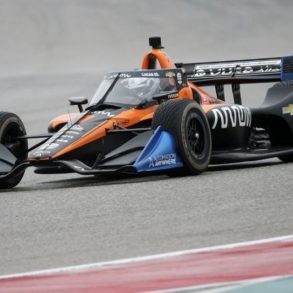
McLaren Indy (2020)
Season: 2020
McLaren Racing announced on August 1, 2019 it would join the series in 2020 in partnership with Arrow Schmidt Peterson Motorsports under the name Arrow McLaren Racing SP. It promised factory support from the iconic constructor with the tested know-how of Sam Schmidt and Ric Peterson at the helm.
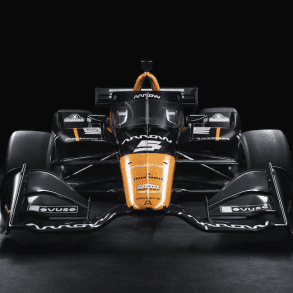
McLaren Indy (2021)
Season: 2021
In 2021, Arrow McLaren SP became the first Chevrolet powered team other than Team Penske to win an IndyCar race since 2016, when Pato O'Ward took his first IndyCar series victory at Texas Motor Speedway. This was also Schmidt Peterson's first victory since 2018 and McLaren's first open wheel racing victory since 2012.
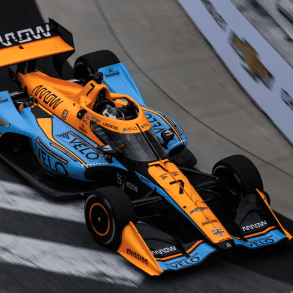
McLaren Indy (2022)
Season: 2022
For the 2022 IndyCar Series, the team's first under McLaren ownership, both O'Ward and Rosenqvist would return to the team as full time entries. The No. 6 car would again return on a part-time basis for the GMR Grand Prix and the 2022 Indianapolis 500 driven by Juan Pablo Montoya.
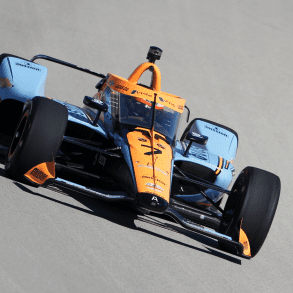
McLaren Indy (2023)
Season: 2023
I would image there is a blend of frustration and encouragement about 2023 for Arrow McLaren. There was no trip to Victory Lane, but there were numerous near misses that give a sense the organization is right on the cusp of a major breakout.
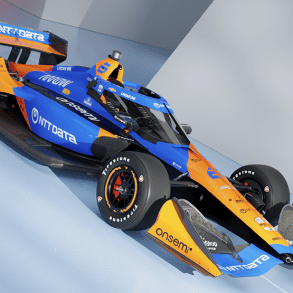
McLaren Indy (2024)
Season: 2024
For Arrow McLaren to shorten or erase the gap to Ganassi and Penske, getting back to victory lane with O’Ward and dialing up the podiums for Rossi — and resuming his winning ways — is a must. At least two of its cars have to be in the hunt wherever they race.
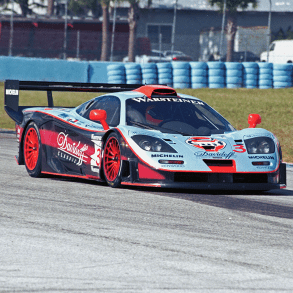
McLaren F1 GTR Race Car
Season: 1995 - 1997
The F1 GTR race cars that lined up on the grid at the 24 Hours of Le Mans in 1995 were essentially still no more than converted road cars. Against faster purpose-built sports prototypes, F1 GTRs finished the 1995 race in 1st, 3rd, 4th, 5th and 13th positions, an unprecedented result that made.

McLaren F1 GTR Long Tail
Season: 1997
Rivals responded to the dominance of the F1 GTR with purpose-built racers that were then modified just enough to create the road-going versions needed to certify them. McLaren decided to create an F1 GT road car to homologate a race version sharing the same basic form. The racer would be the ultimate evolution of the F1 GTR.
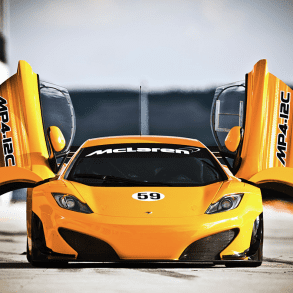
McLaren MP4-12C GT3
2011
The 2011 McLaren MP4-12C GT3 was McLaren's foray into the GT racing scene, adapted from the road-going 12C to meet the rigorous demands of competitive racing. Built in collaboration with CRS Racing, the GT3 variant was designed for high performance and durability on the track. It featured a tuned version of the standard 3.8-liter V8 engine, although slightly detuned to fit GT3 class regulations, producing around 500 horsepower.

McLaren MP4-12C Can-Am
2012
The 2012 McLaren MP4-12C Can-Am Edition was a track-only variant that paid homage to McLaren's historic success in the Can-Am series during the 1960s and 1970s. This edition was the most powerful version of the 12C lineup, boasting an uprated engine that produced 630 horsepower, making it the ultimate non-competitive, track-focused version of the 12C. Unlike the GT3, the Can-Am Edition was not bound by racing regulations.
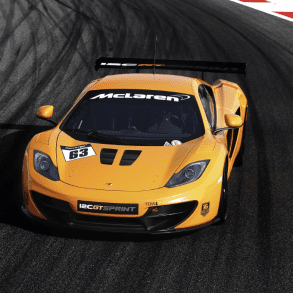
McLaren MP4-12C GT Sprint
2013
Introduced in 2013, the McLaren MP4-12C GT Sprint was designed as a bridge between the road-going 12C and its more track-focused counterparts. The GT Sprint retained the standard 12C’s 3.8-liter twin-turbo V8 engine, but it featured enhanced cooling systems and a recalibrated transmission for better performance on track days. The car was fitted with a race-prepared suspension system and Pirelli racing tires.
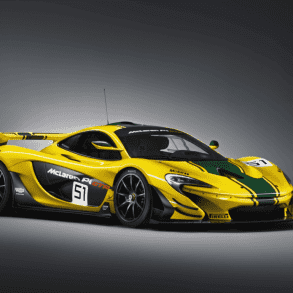
McLaren P1 GTR
2015 - 2016
The first McLaren to use the GTR moniker was the McLaren F1 GTR that won the 1995 Le Mans 24 Hours. Without road-car regulations to hold it back, the McLaren P1 GTR was an extreme track car. It was only offered for sale to P1 owners and include participation in driving events at some of the world’s most iconic circuits with specialist vehicle support. The ultimate track focused driver’s car.
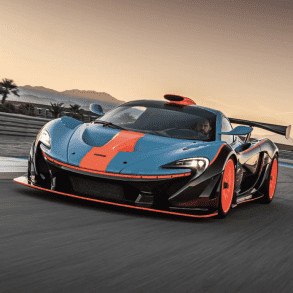
McLaren P1 GTR-18
2020
In April 2020, Lanzante Motorsport revealed that it would do six more road legal conversions of the P1 GTR. This conversion uses the same Longtail bodywork found on the P1 GT plus new rear wing, larger front splitter, and louvers for downforce.

McLaren 650S Sprint
2015
A track-oriented version of the standard 650S, specifically engineered for an enhanced racing experience without the full commitment to professional motorsport regulations that the GT3 variant adheres to. Launched to cater to the avid track day enthusiast, the Sprint model includes several performance upgrades over the standard 650S.
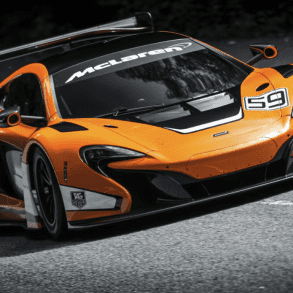
McLaren 650S GT3
2015
Introduced to compete in various GT3 category events around the world, featuring extensive modifications to meet strict racing standards. The 650S GT3 boasts a significantly revised aerodynamic package, including a large rear wing, a prominent front splitter, and additional dive planes to provide enhanced downforce and better handling at high speeds.
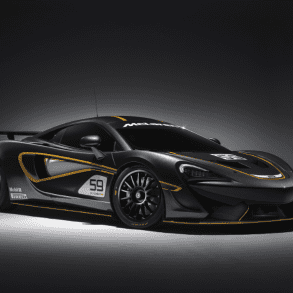
McLaren 570S GT4
2016
The McLaren 570S GT4 is a race-ready version of the standard 570S, specifically designed to meet the stringent specifications of GT4-category racing. Introduced to cater to both amateur and professional racers, is equipped with competition-oriented modifications. These include a significant aerodynamic overhaul with a large rear wing, front splitter, and underbody diffuser.
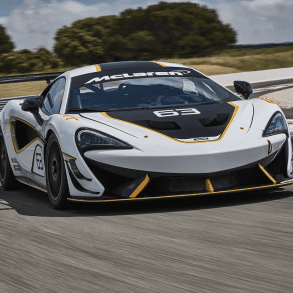
McLaren 570S Sprint
2016
The McLaren 570S Sprint, while also a track-focused variant of the 570S, is positioned differently compared to the GT4, as it is not homologated for any specific racing series. This allows for more freedom in terms of performance enhancements and customization. The Sprint is designed primarily for private track use.
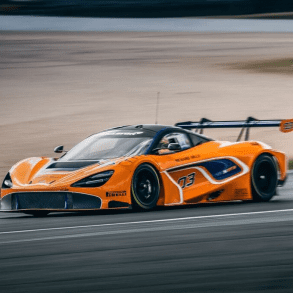
McLaren 720S GT3
2018
The 720S GT3 elevates the extreme performance of the Super Series model to world-class track pace – accessible to professional and amateur drivers alike. The latest GT3 challenger is undergoing an intensive track testing programme throughout 2018, and will compete with customer teams at demanding GT races.
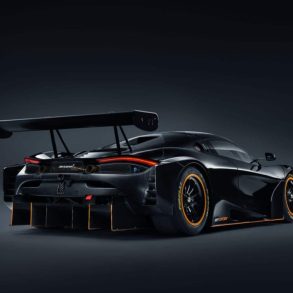
McLaren 720S GT3X
2021 - 2022
This otherworldly creation is a track-only car based on the 720S GT3. However, it isn't homologated for racing. That means McLaren were not bound by restrictions and were able to wring out every ounce of performance from the 720S GT3X. It is not eligible for the GT3 racing series but McLaren will still build one.
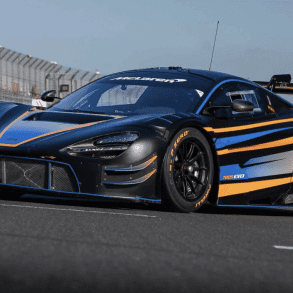
McLaren 720S GT3 EVO
2023
In 2023, McLaren launched an EVO for the 720S GT3. The EVO saw improvements made on aerodynamics and suspension, aimed at improving the car's handling in traffic. The car was available to be purchased brand new, or as an upgrade kit for existing 720S GT3 cars. The perfect track day weapon?
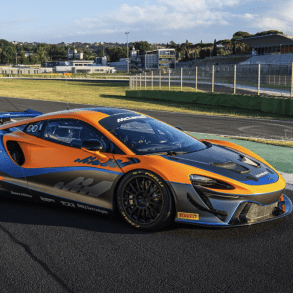
McLaren Artura Trophy
2022
The McLaren Artura Trophy is a track-focused evolution of the Artura, designed for customer racing series. It features unleashed power from the V6 without hybrid system restrictions, a stripped-down interior, and aggressive aerodynamic upgrades for maximum performance on the circuit.
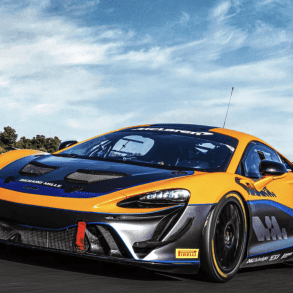
McLaren Artura GT4
2022
The McLaren Artura GT4 adheres to strict GT4 racing regulations. While it shares the Artura's core technology and design, it maintains a closer similarity to the road car for balance of performance with other GT4 competitors. Key differences include less extreme aero, power tuned to regulations.


